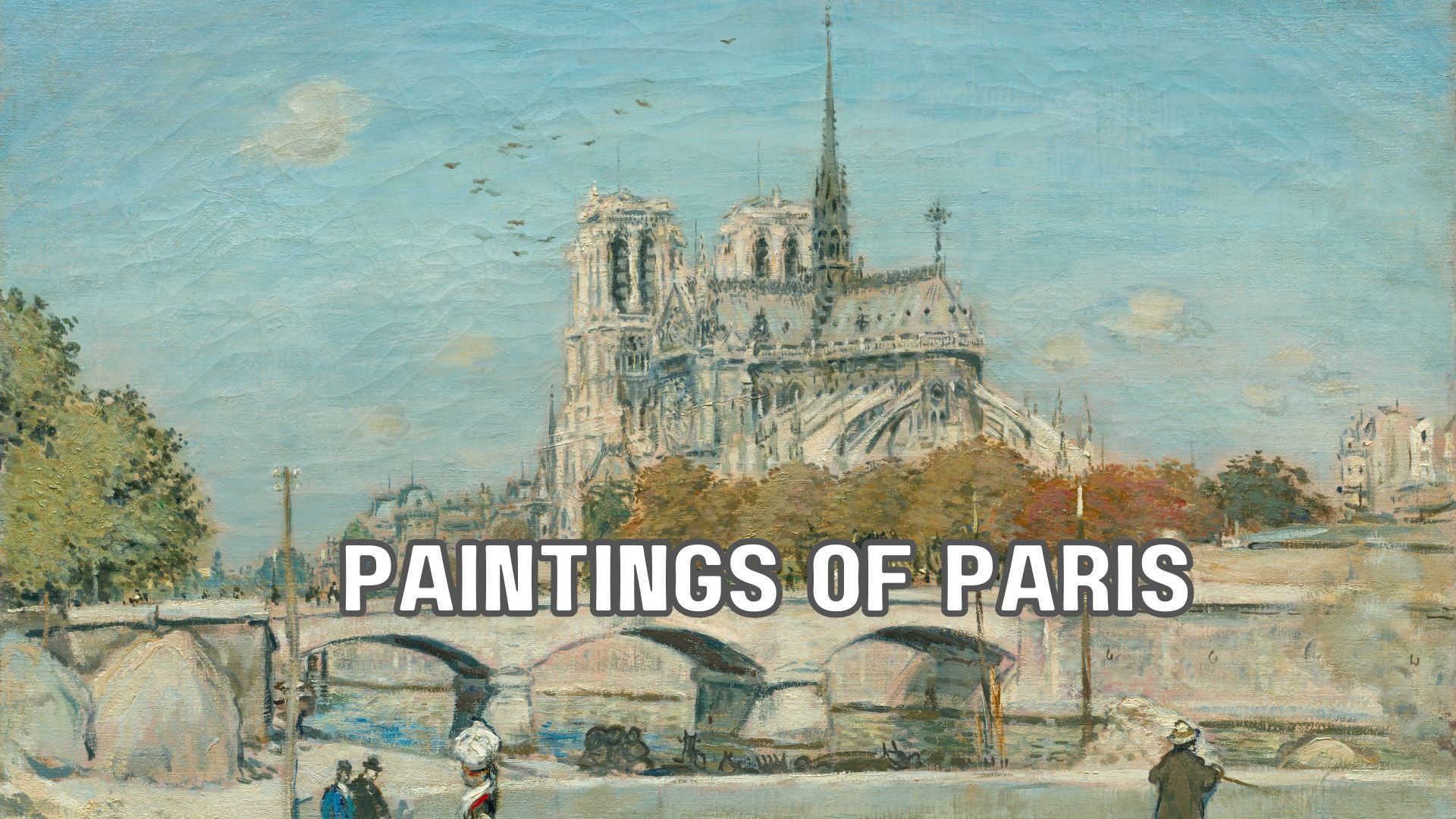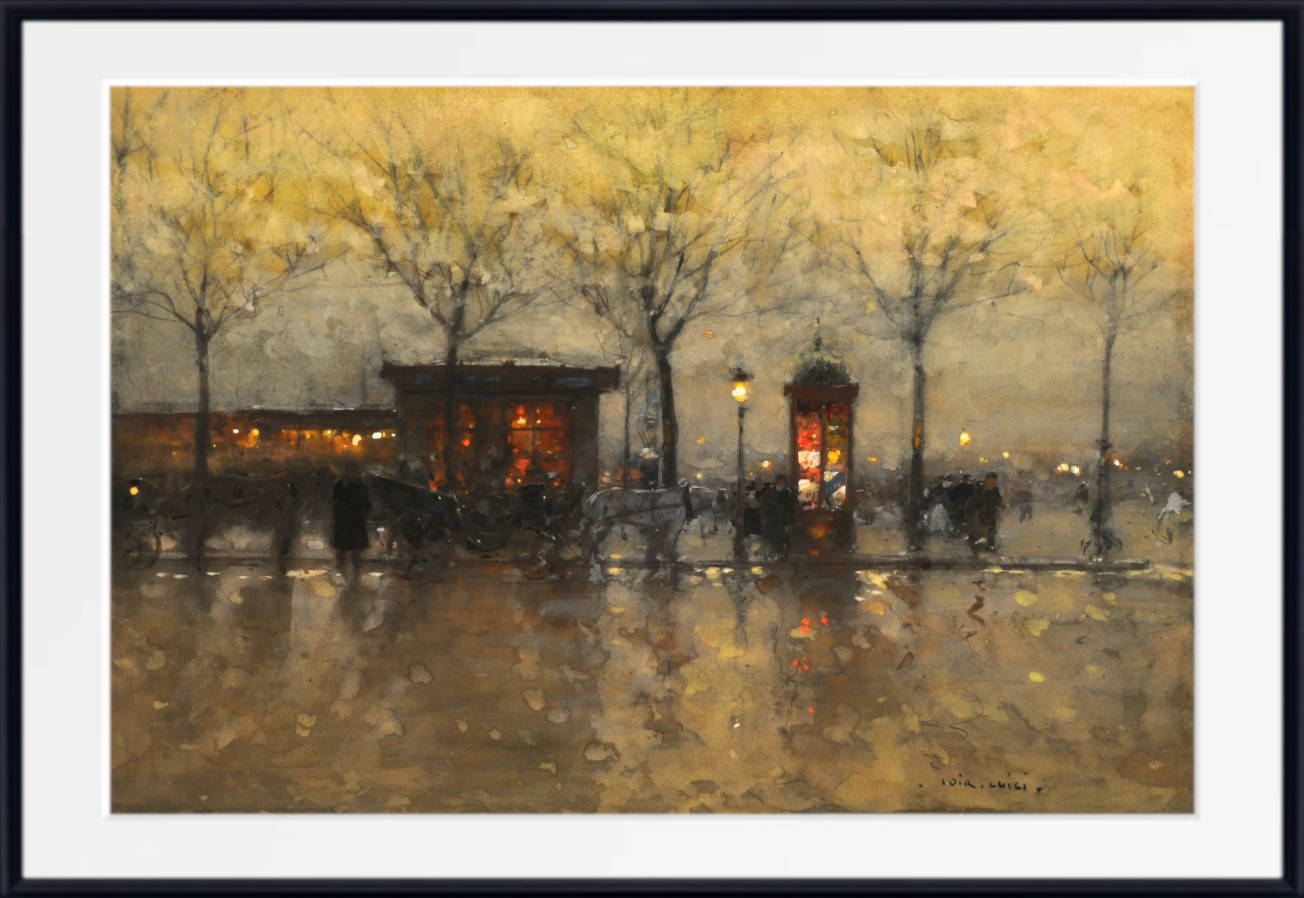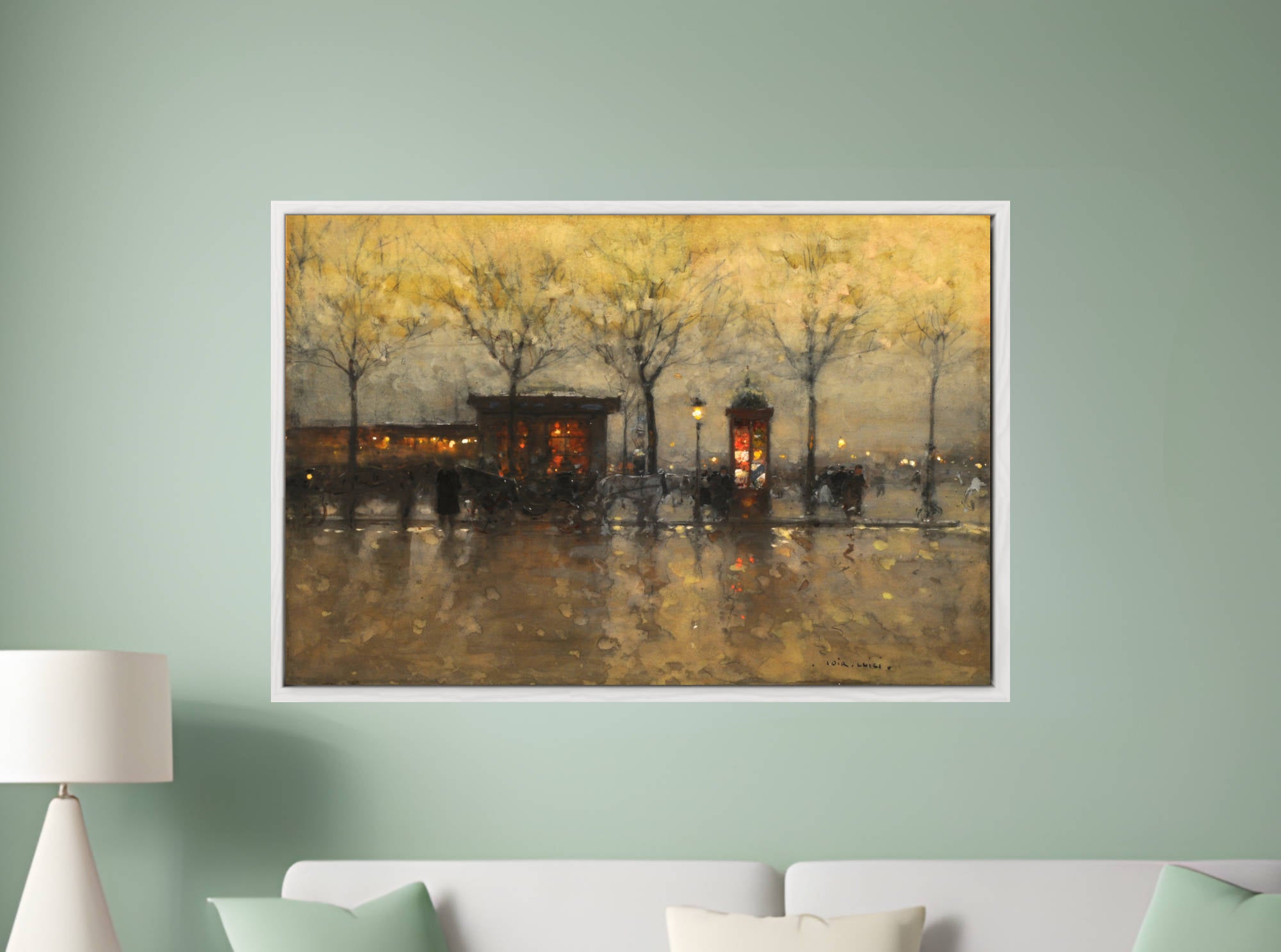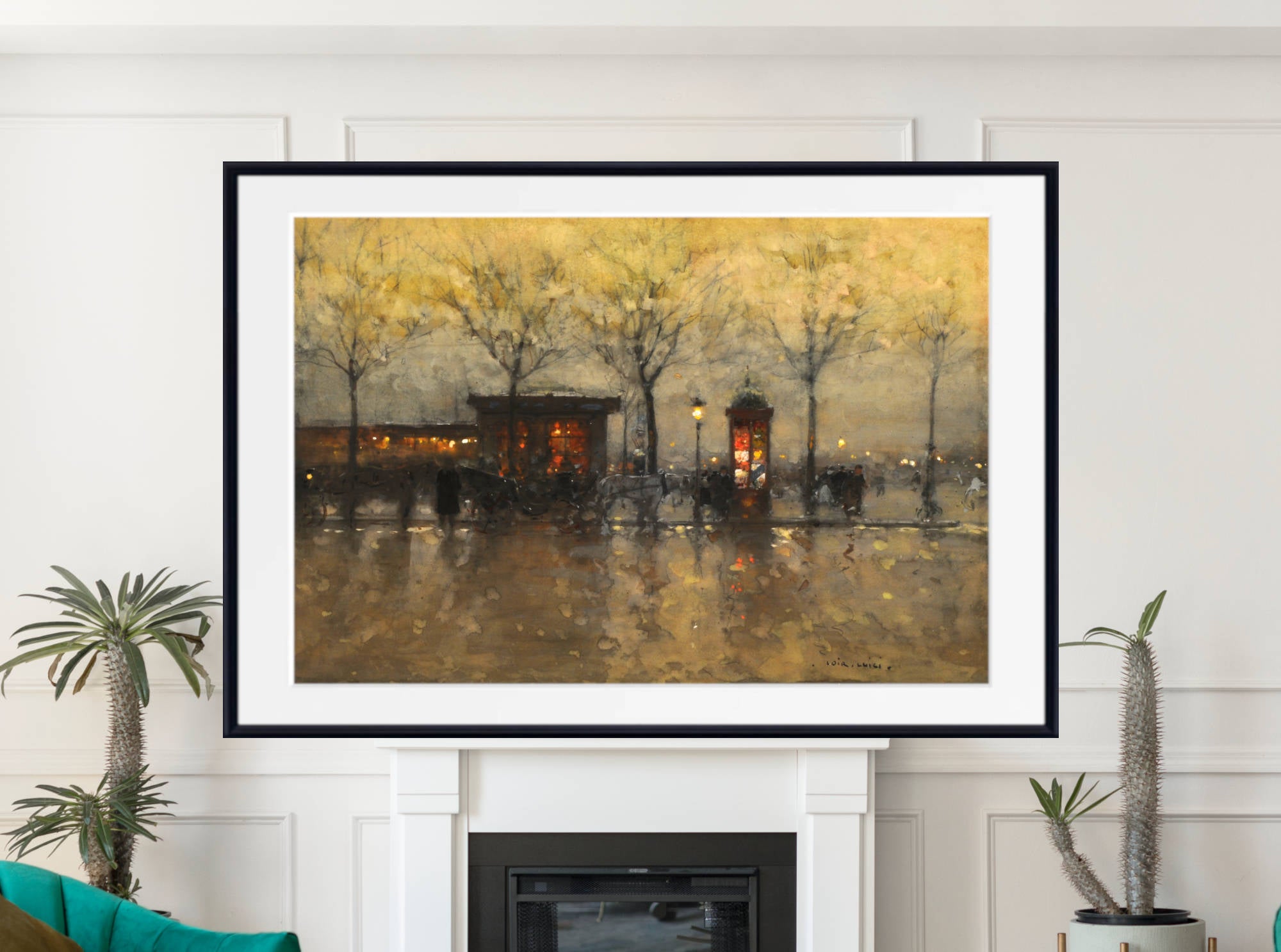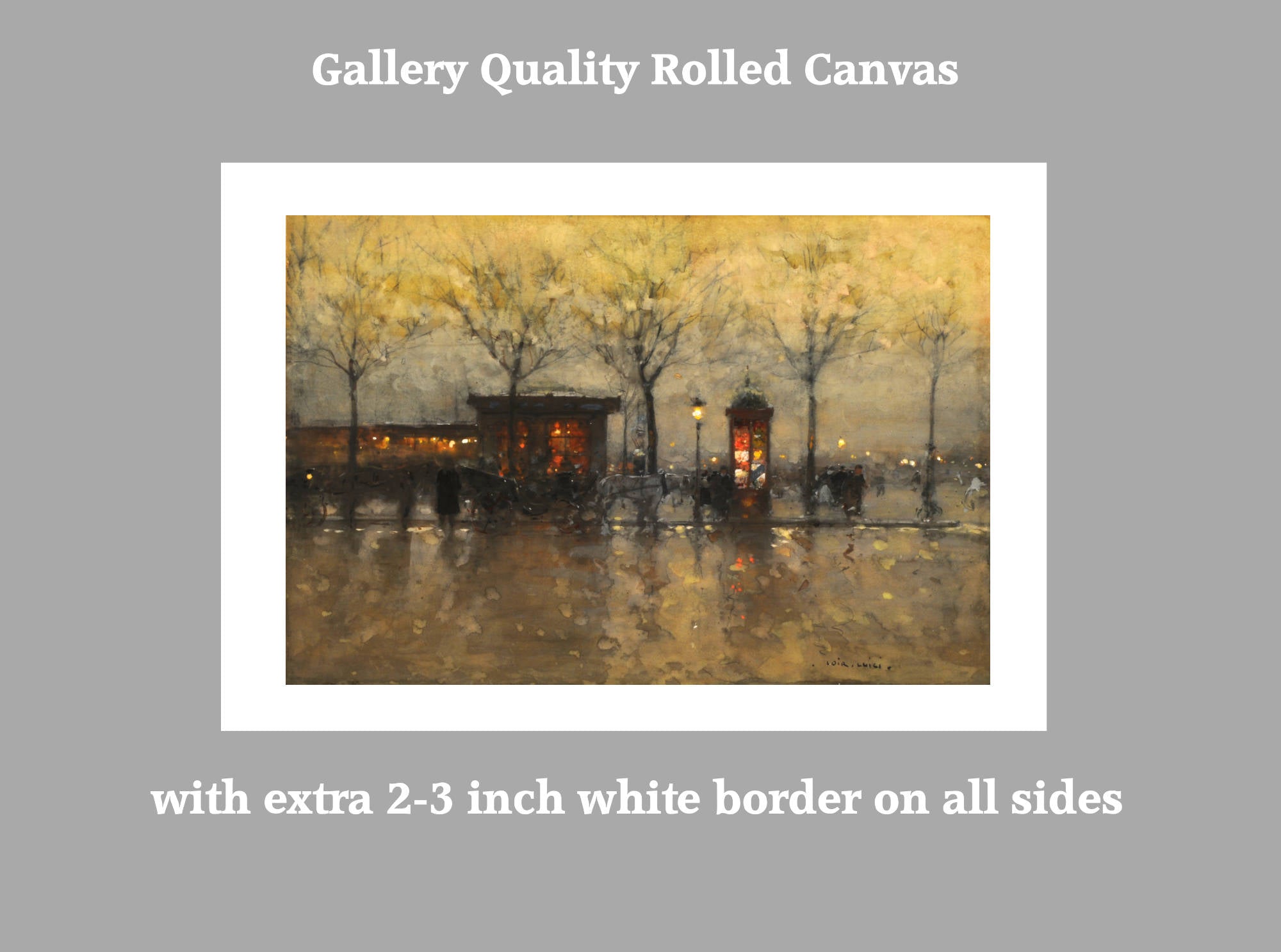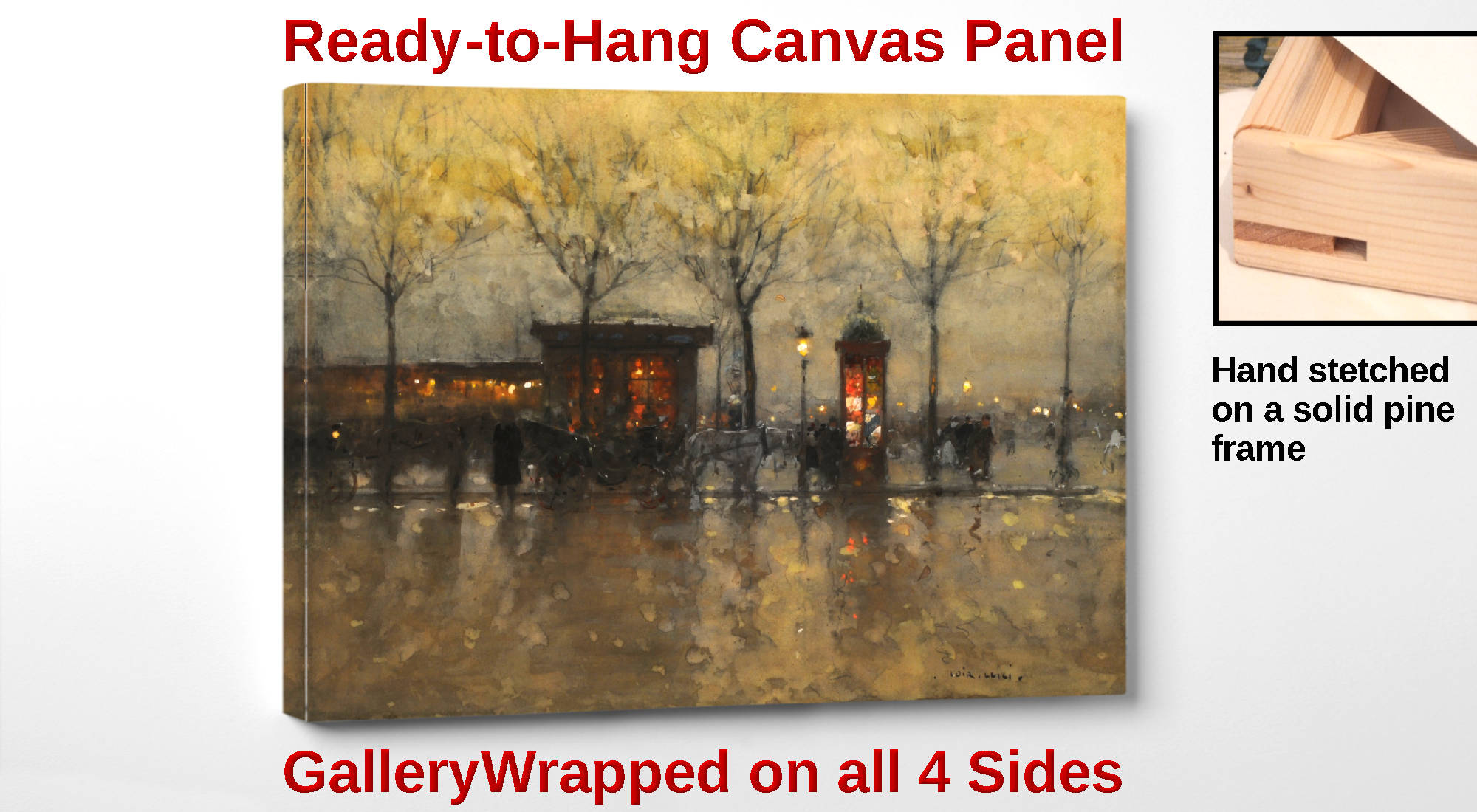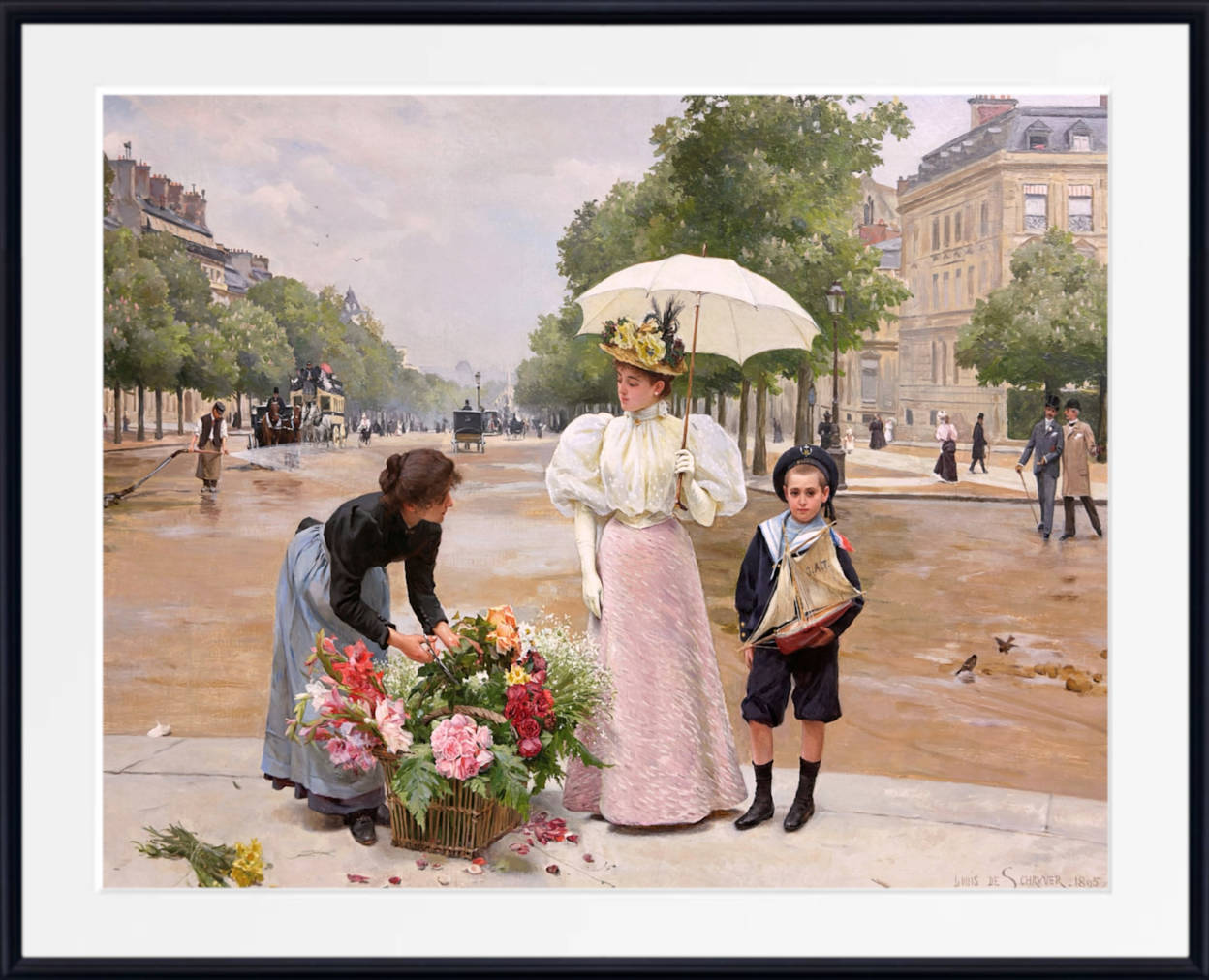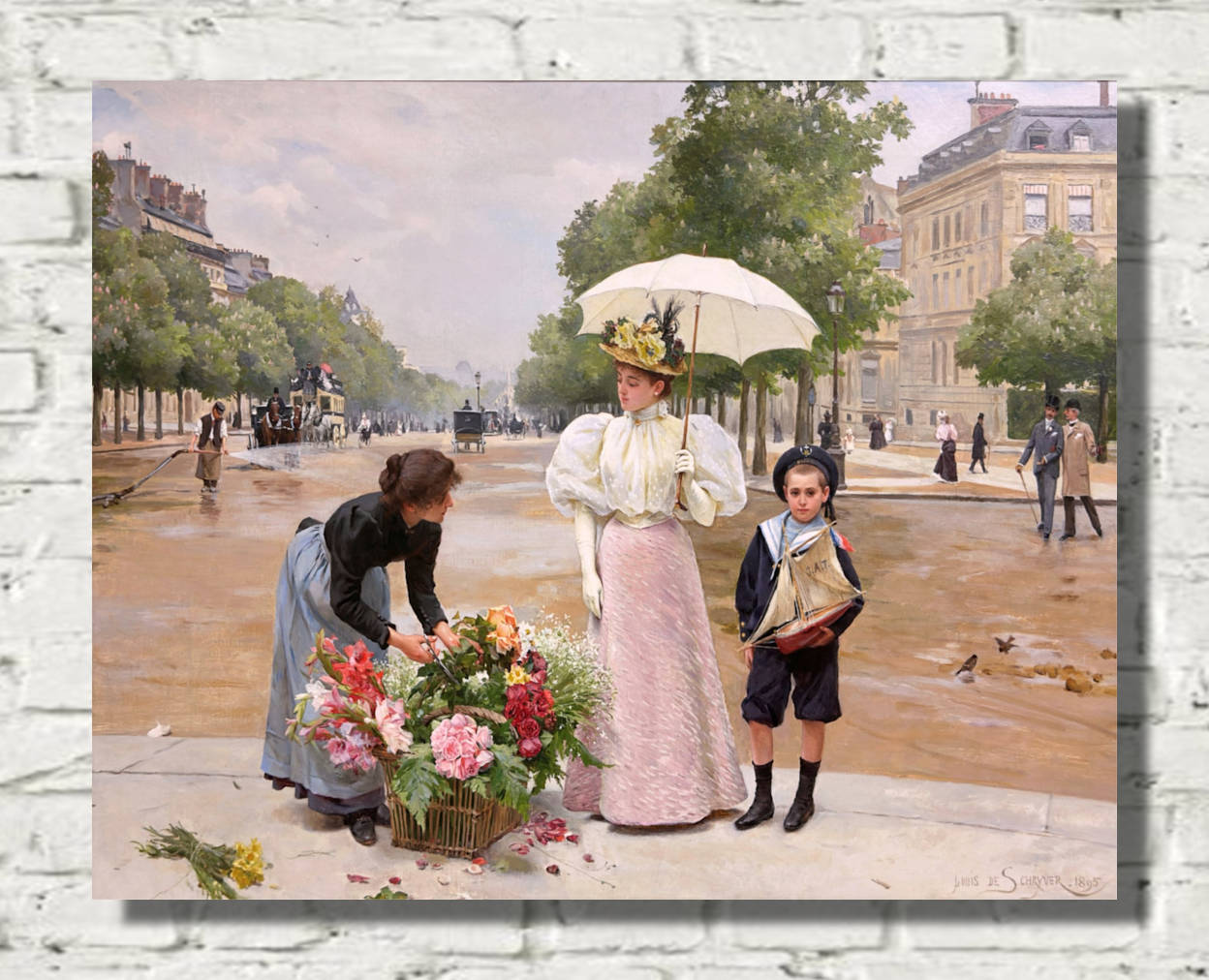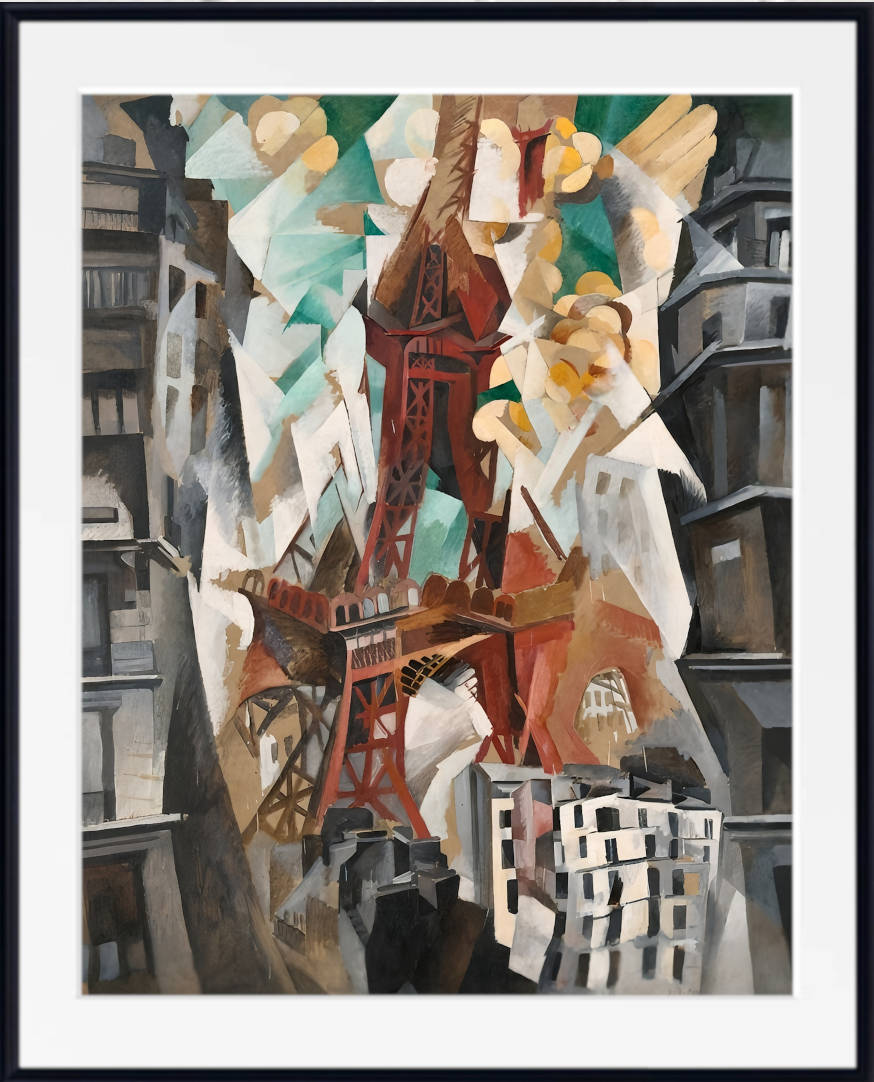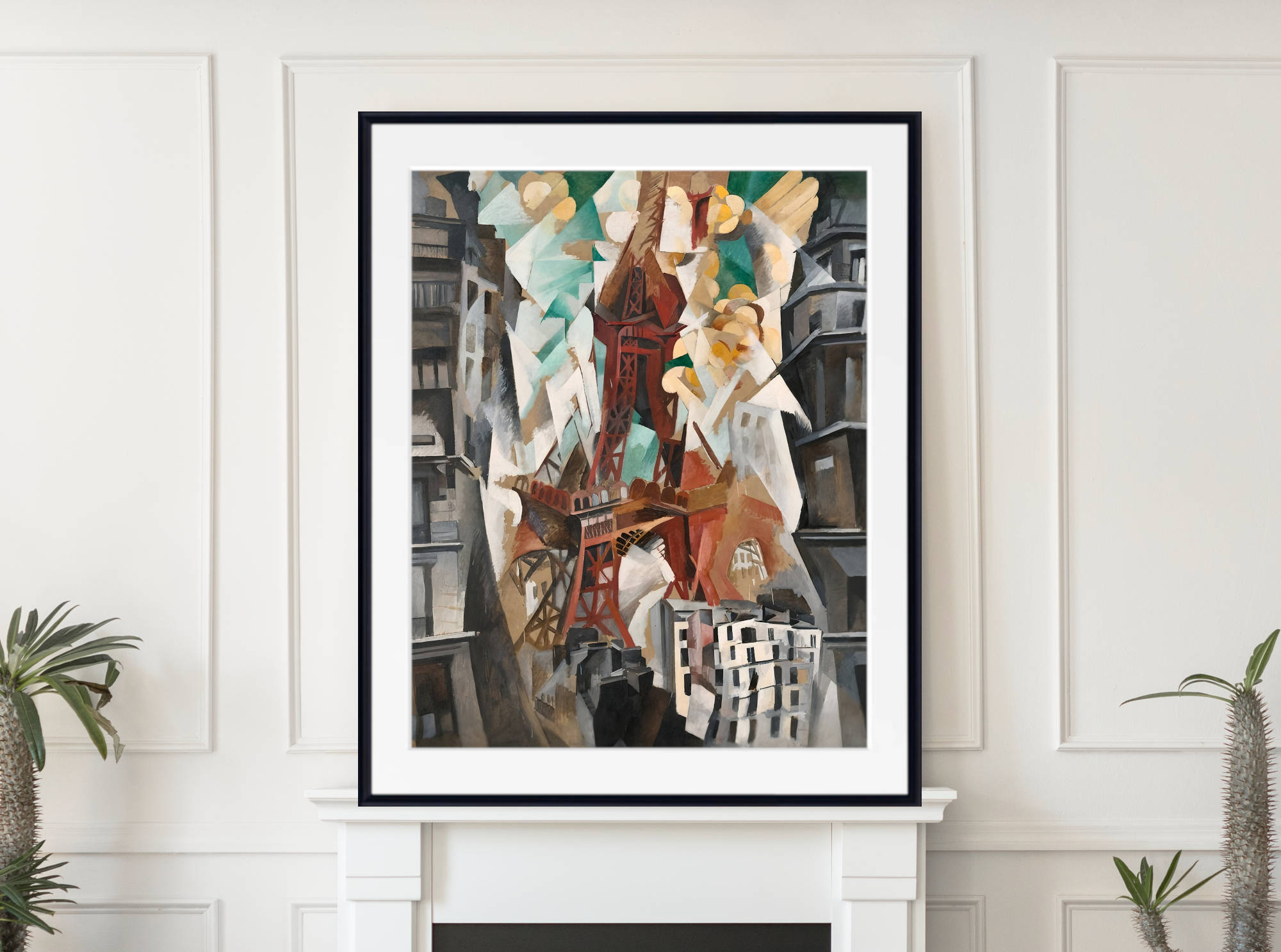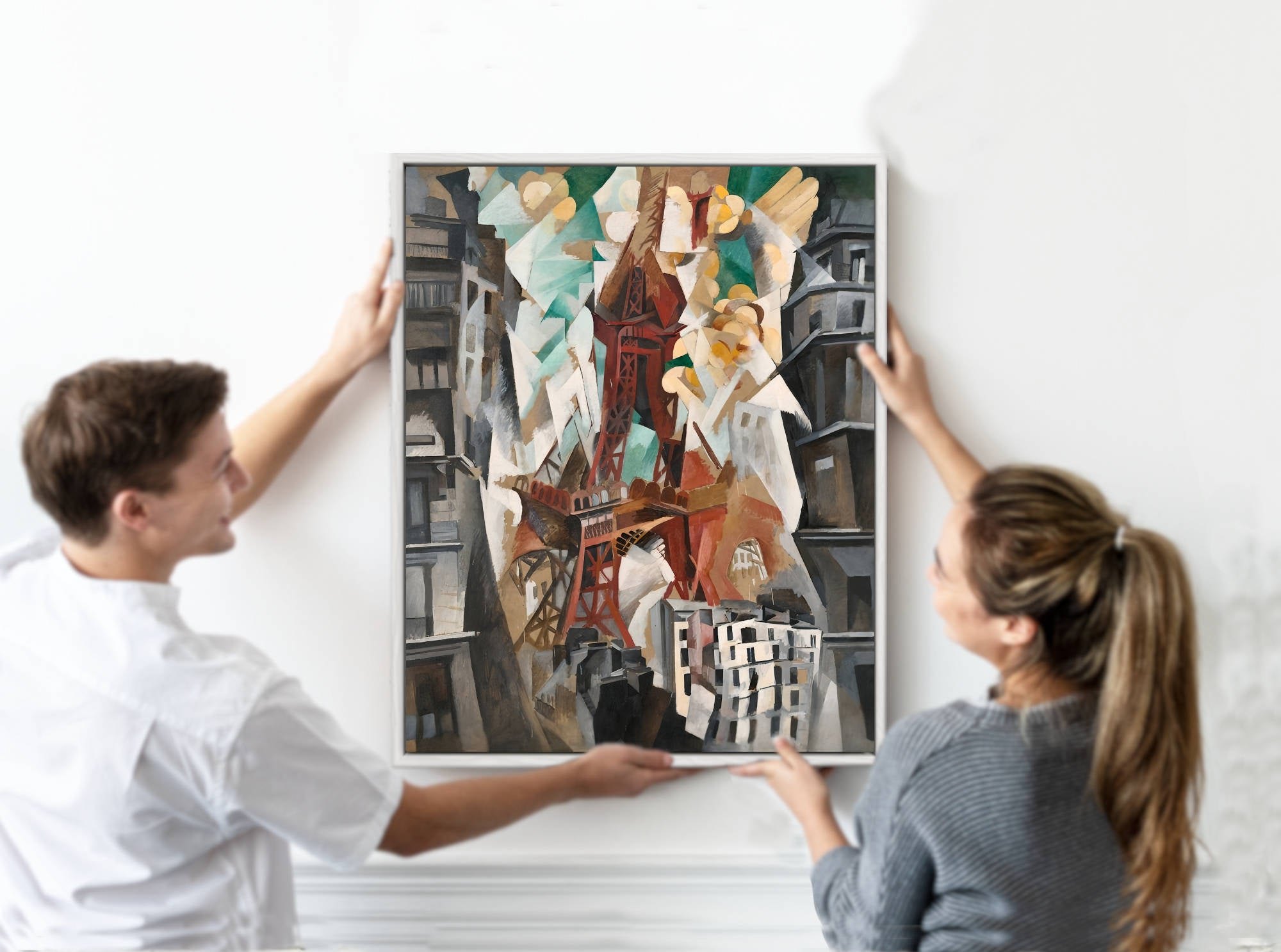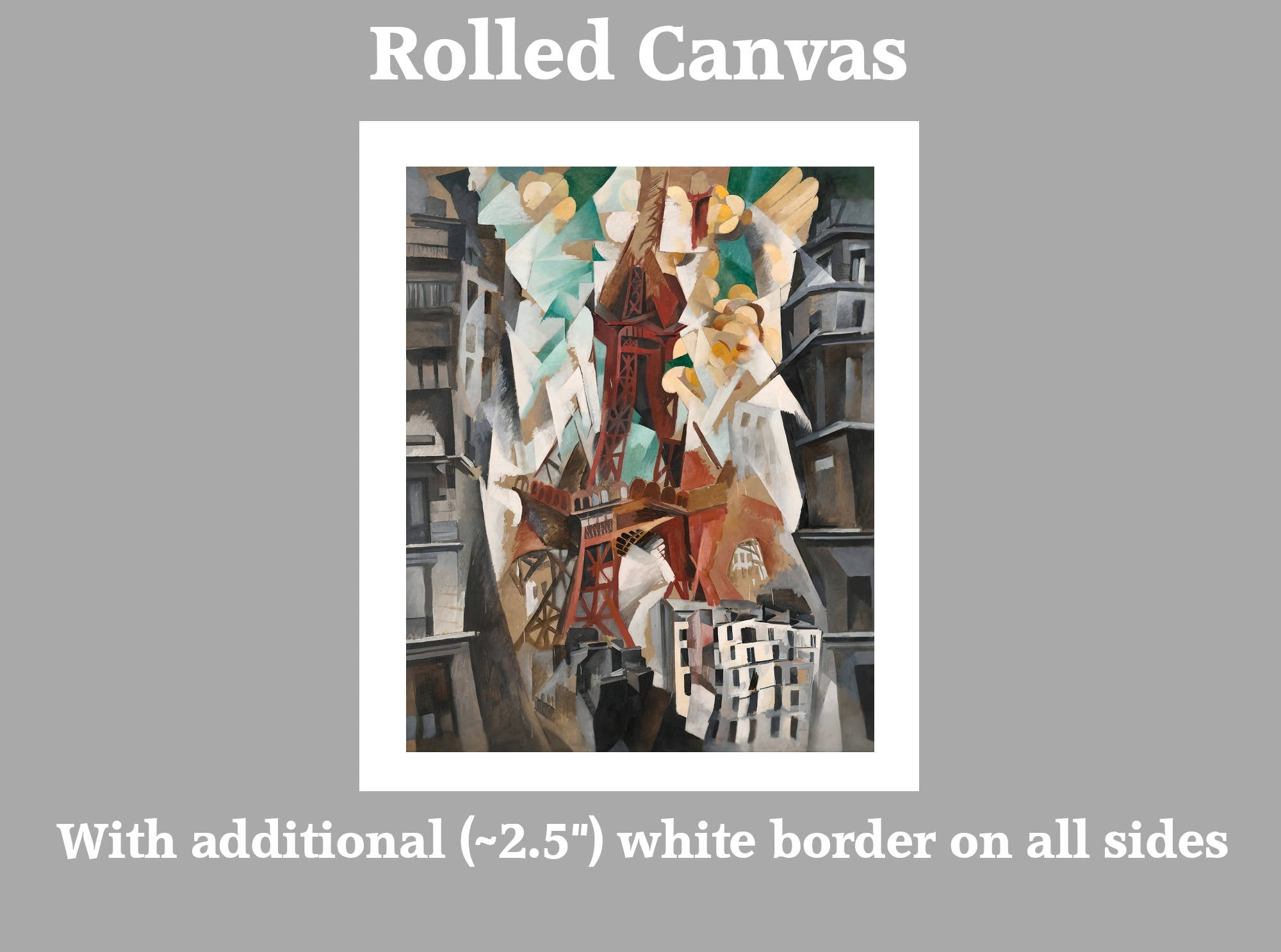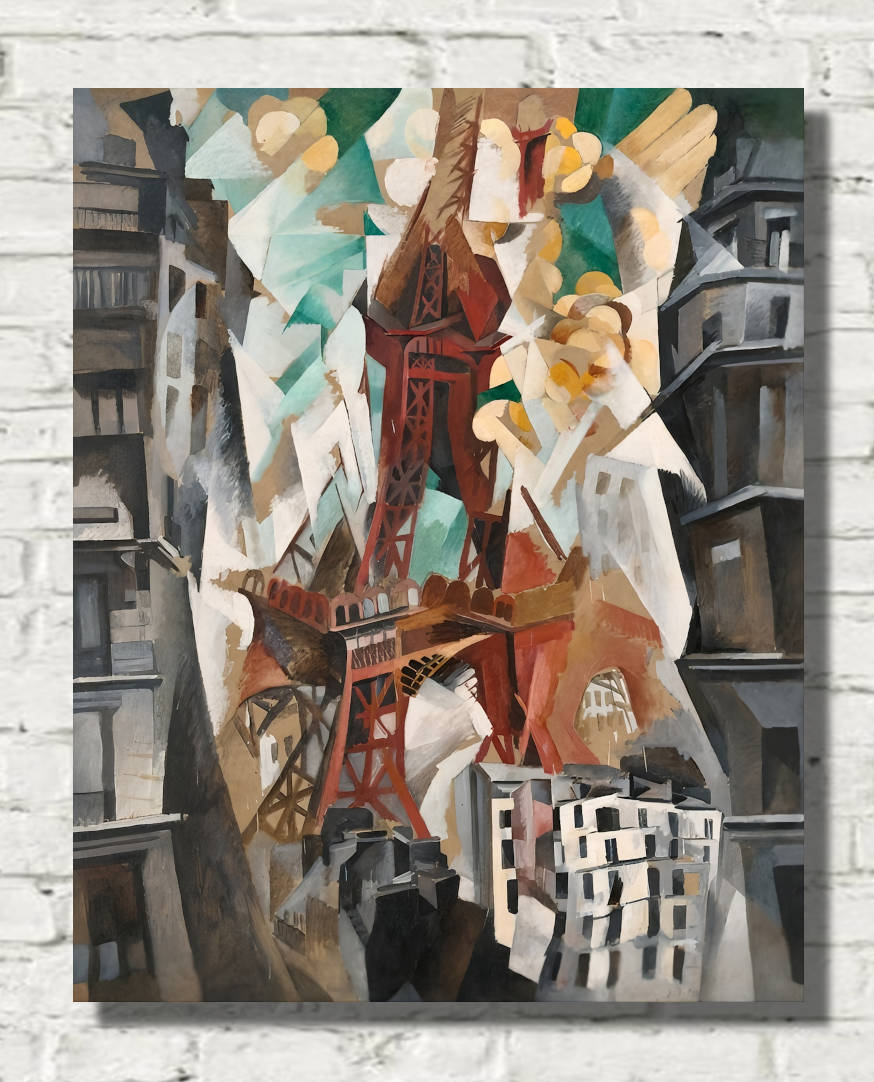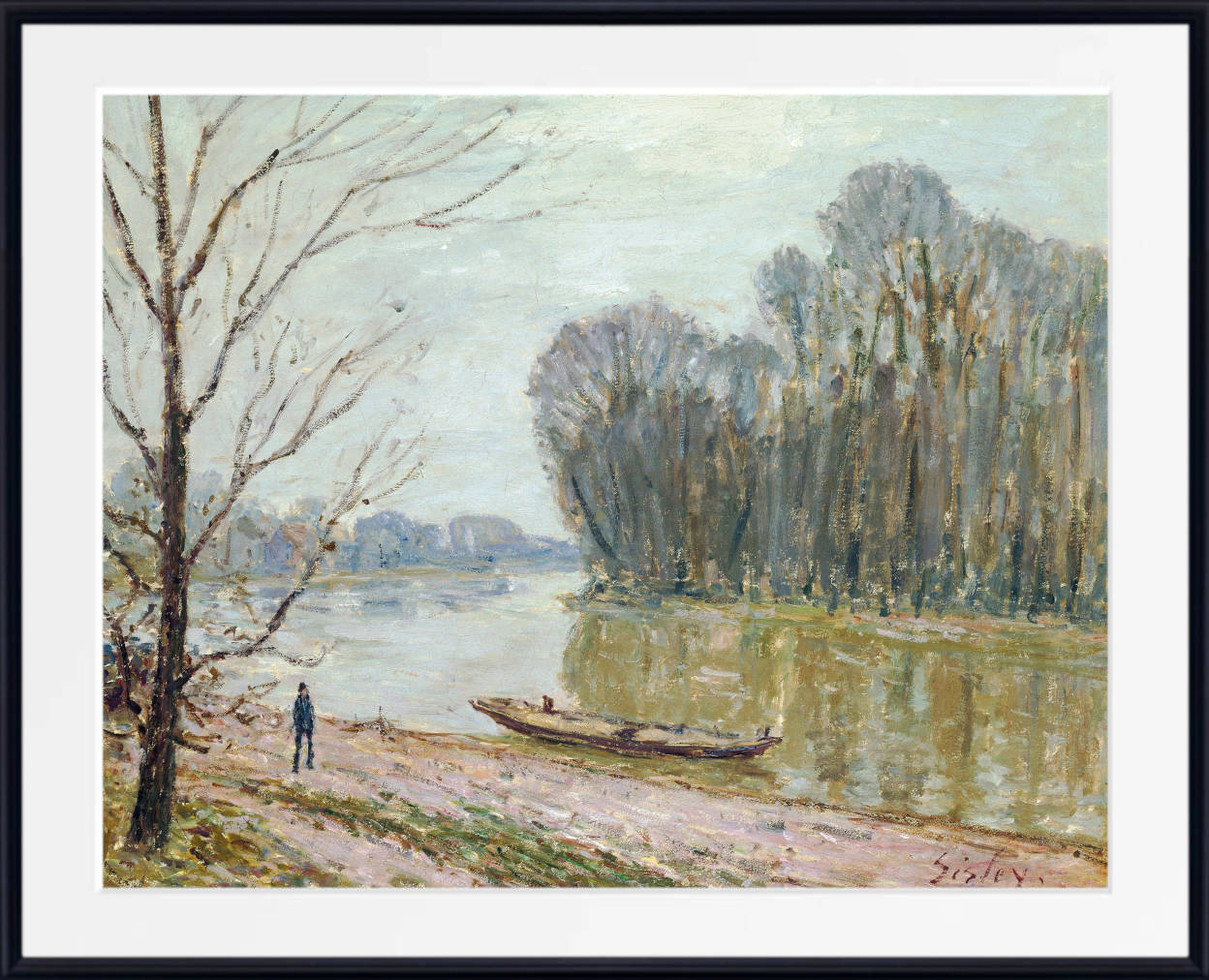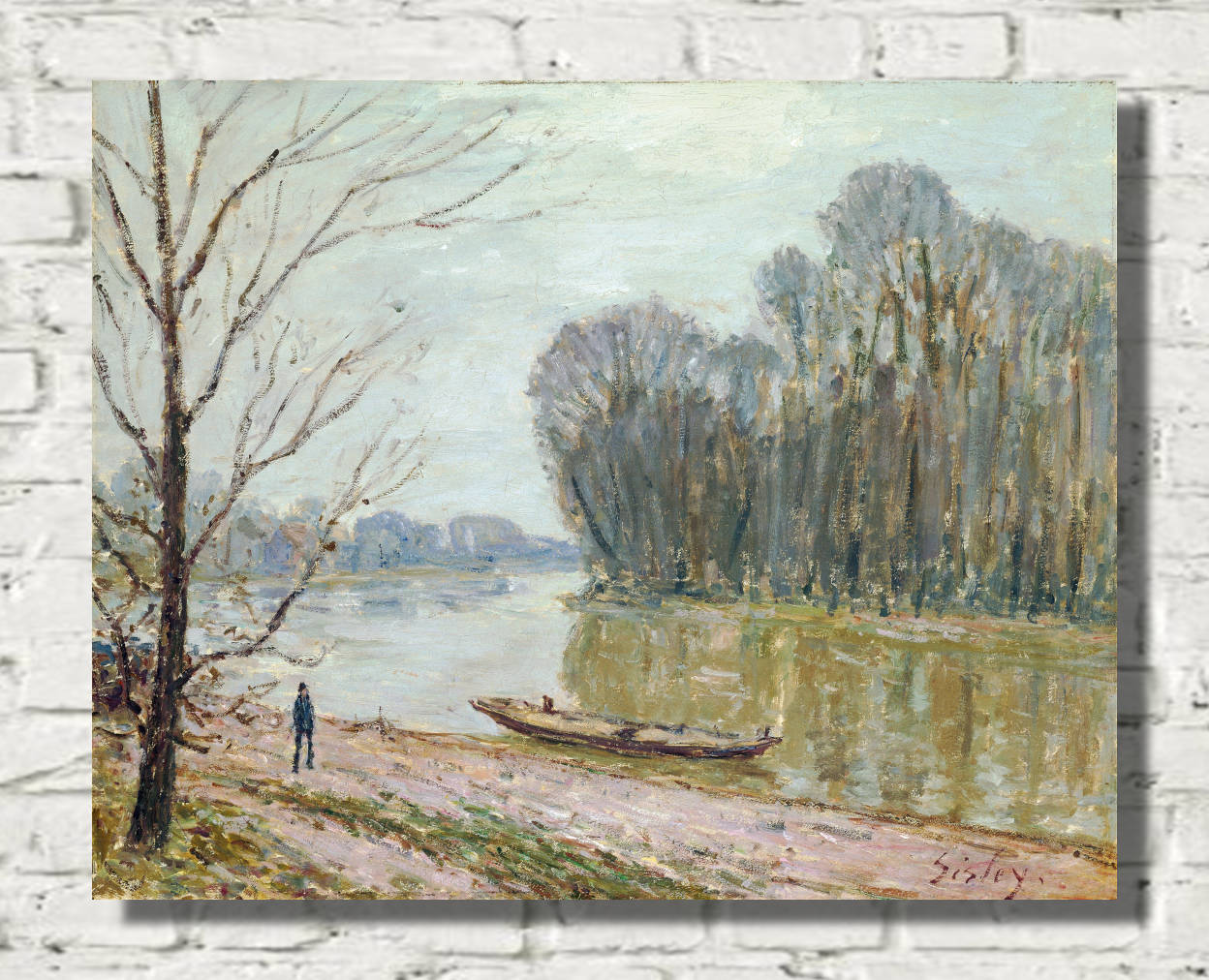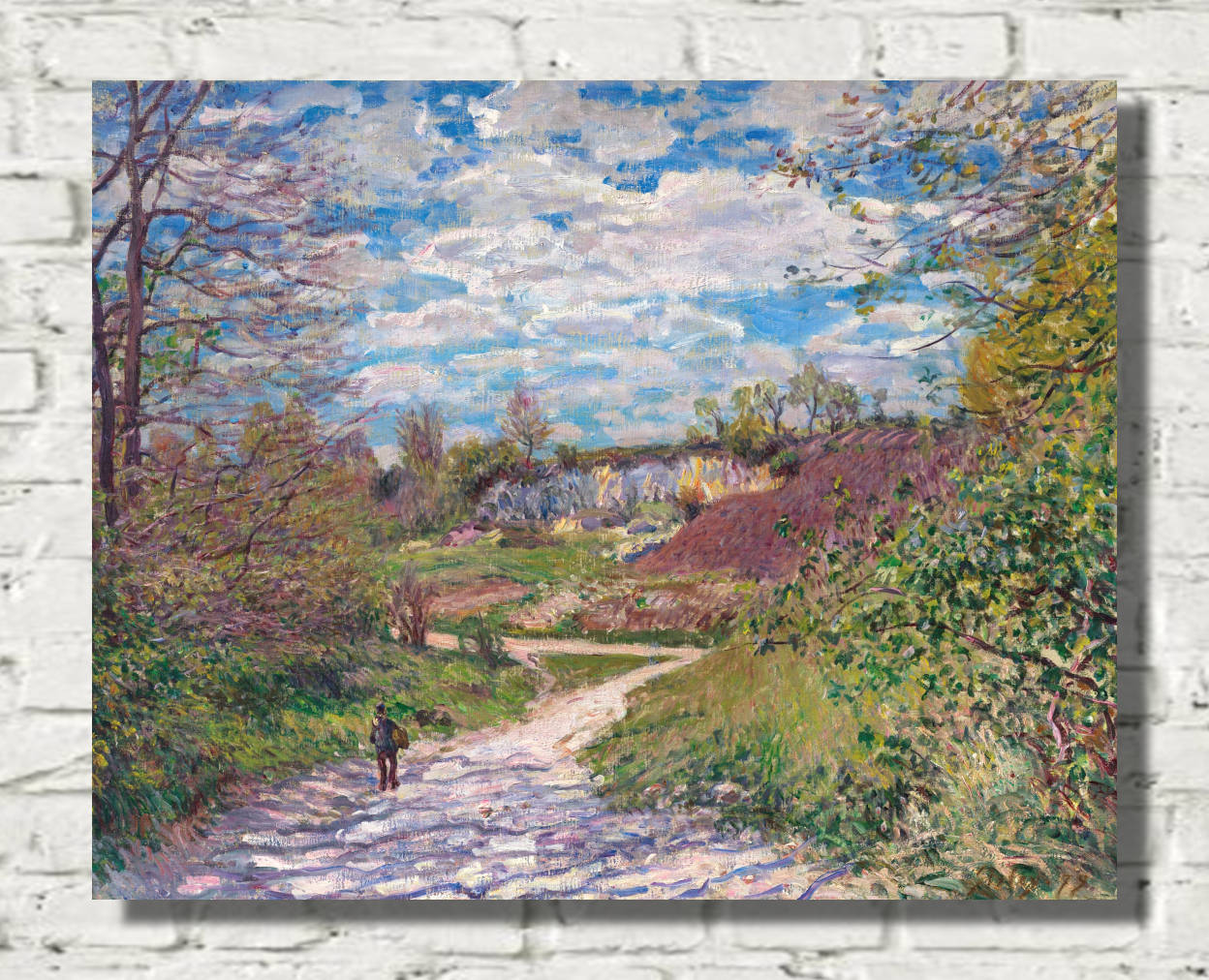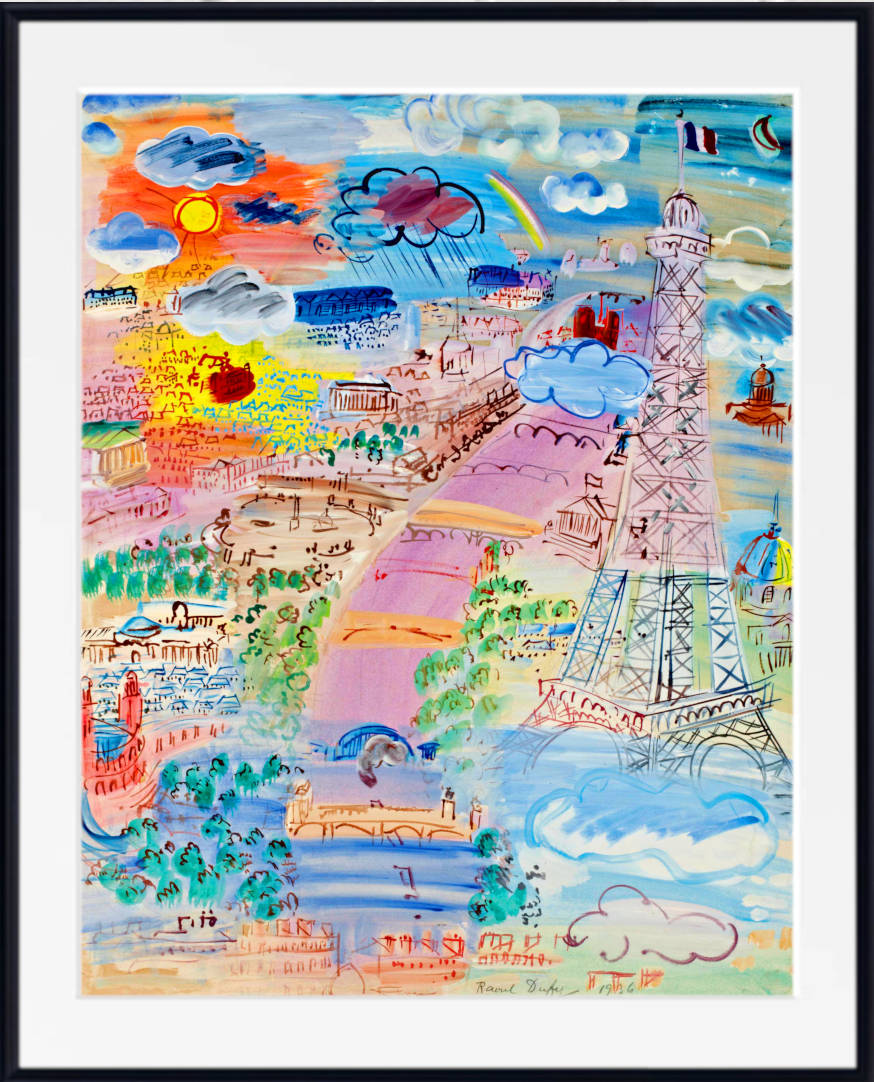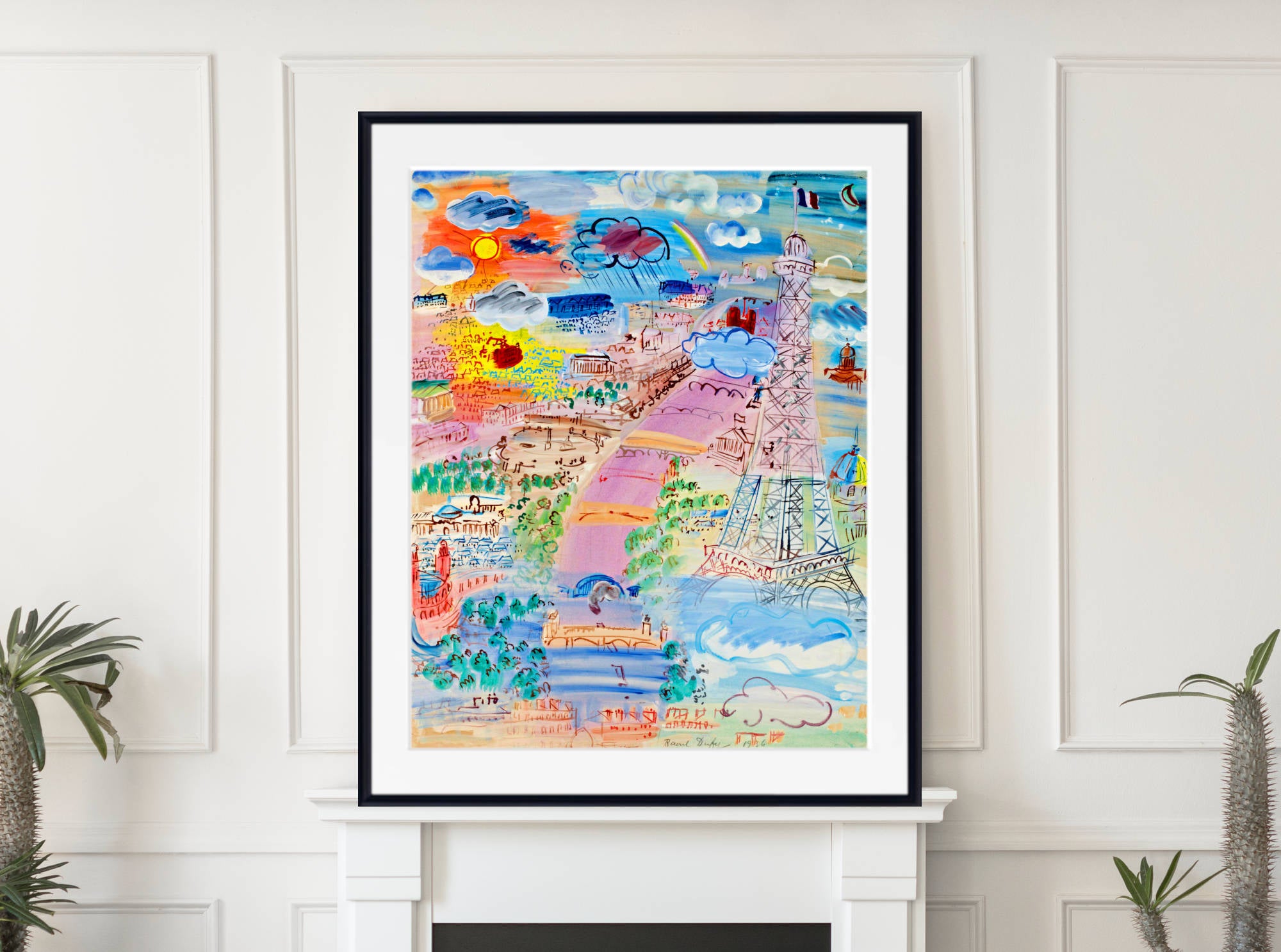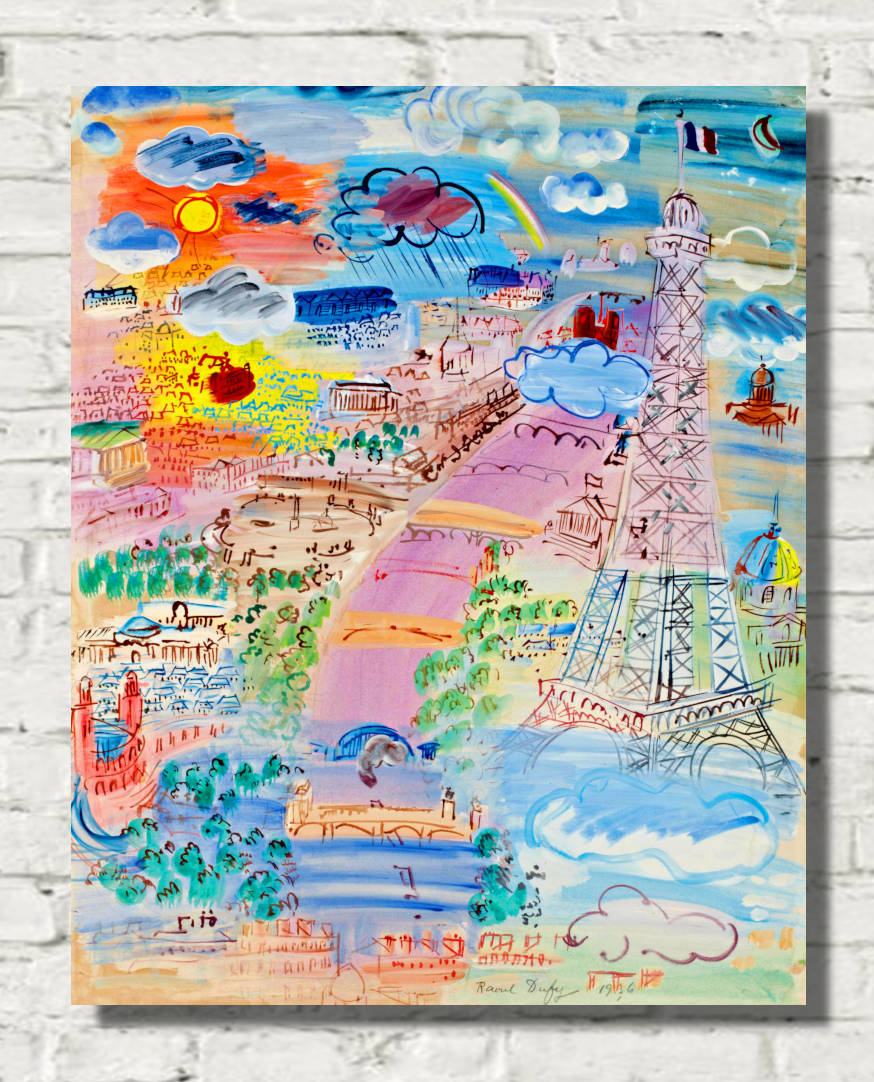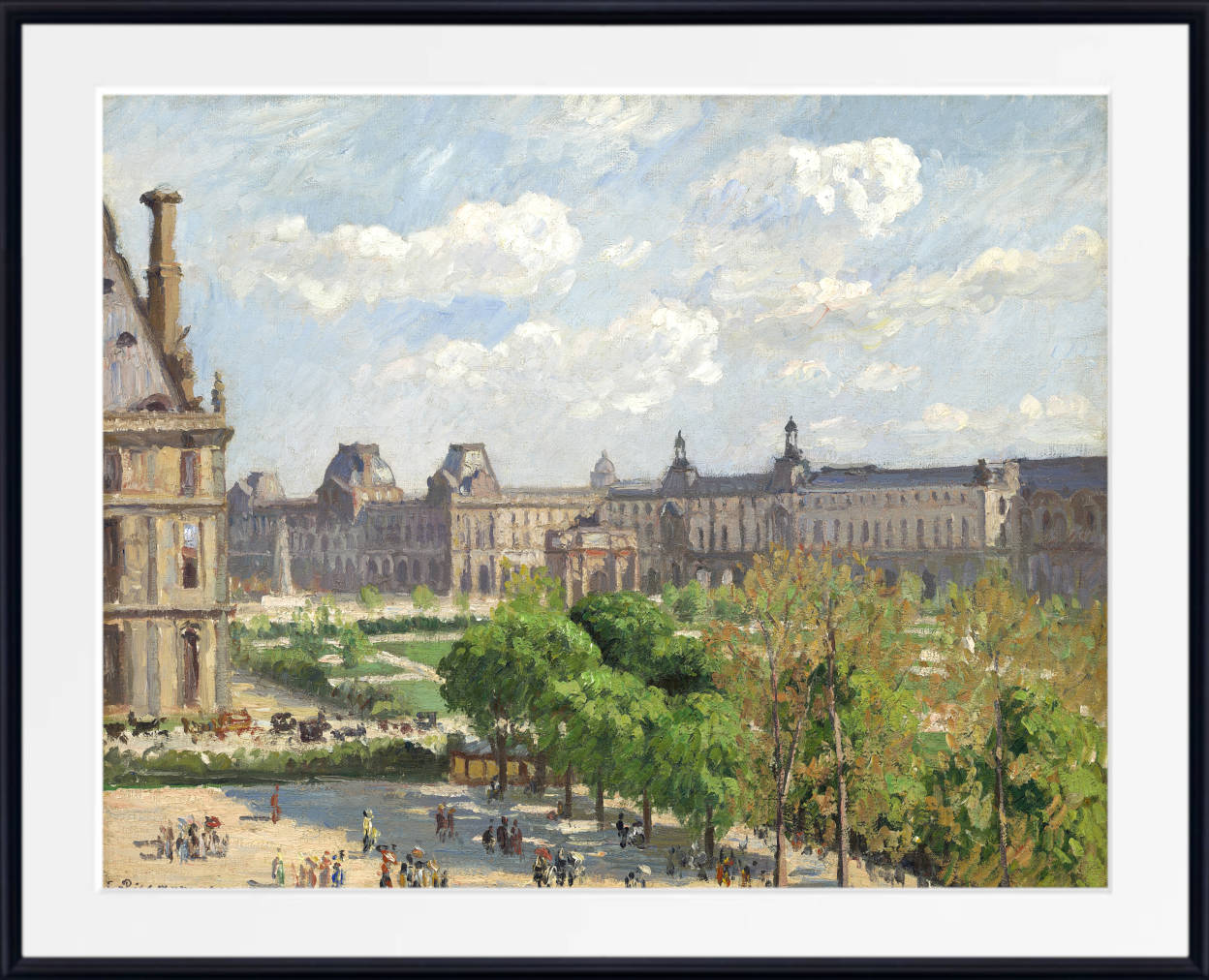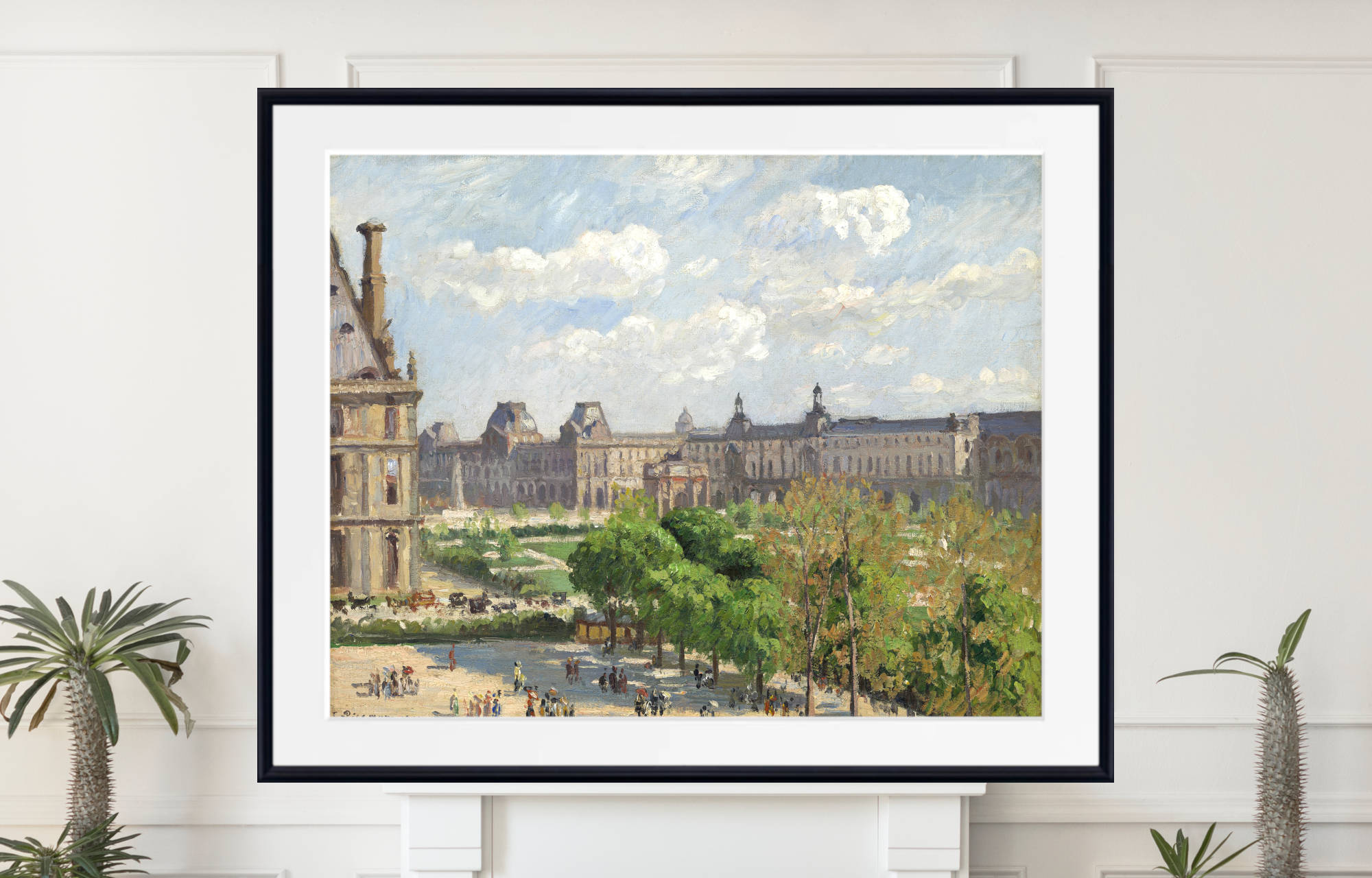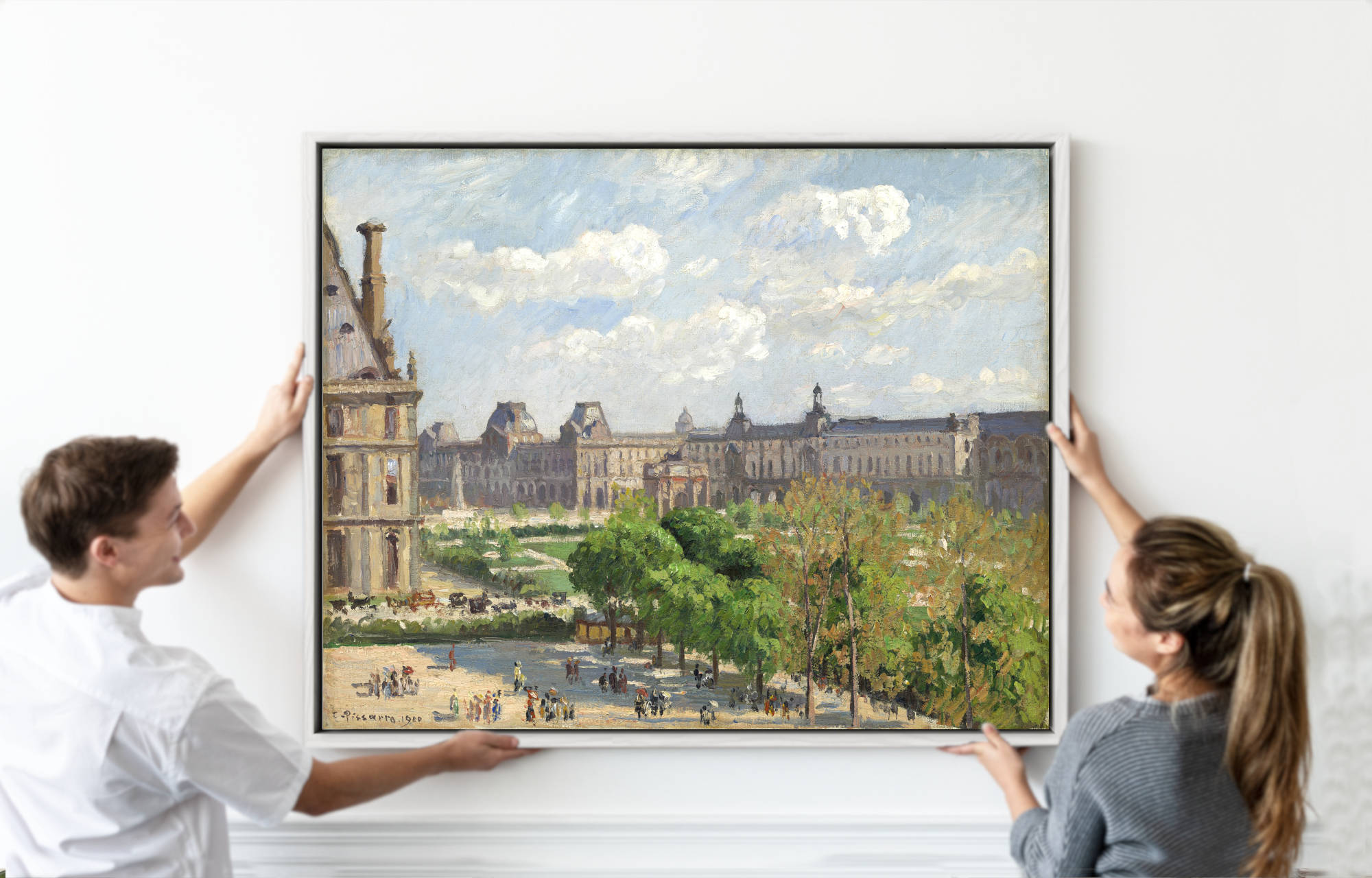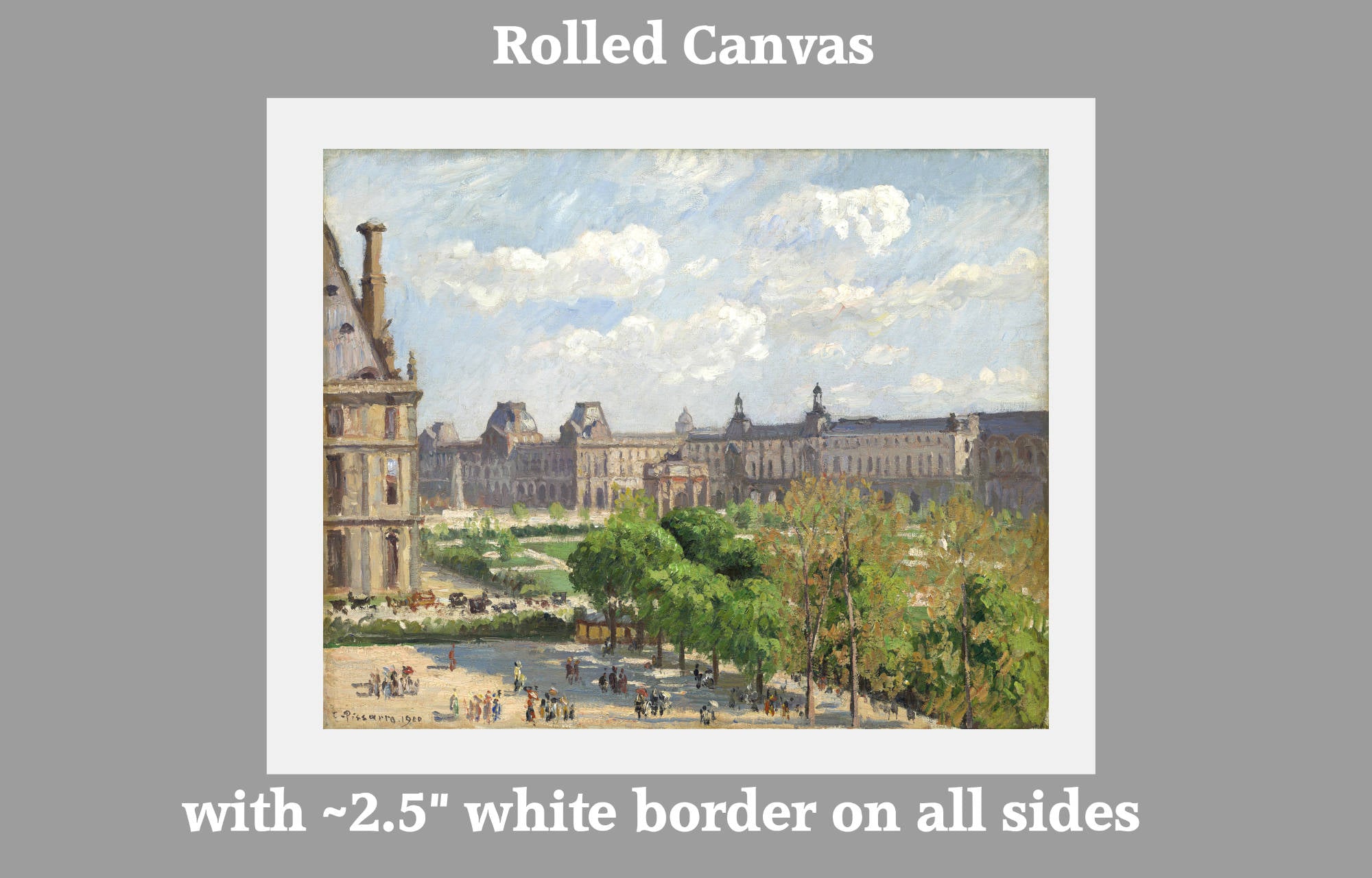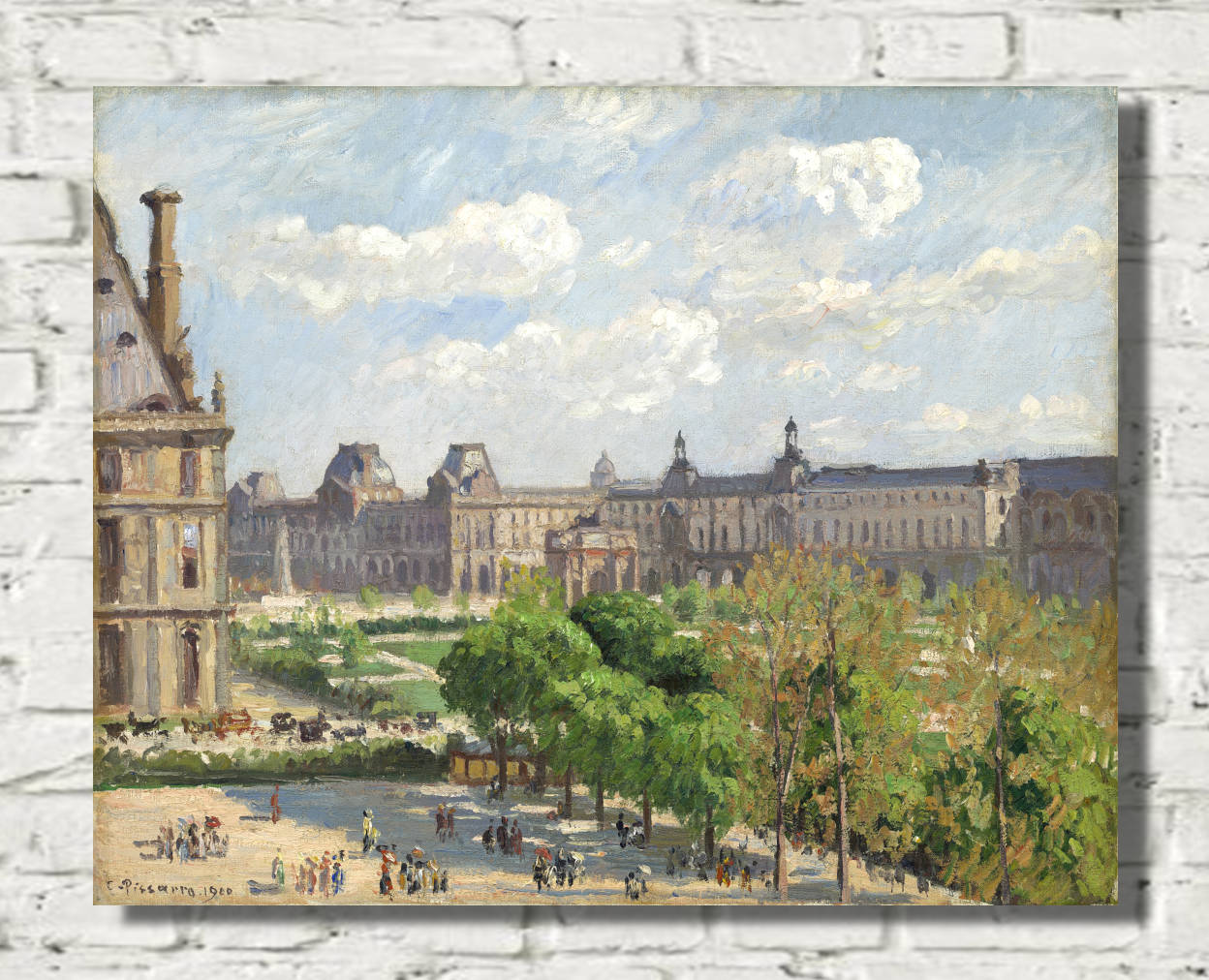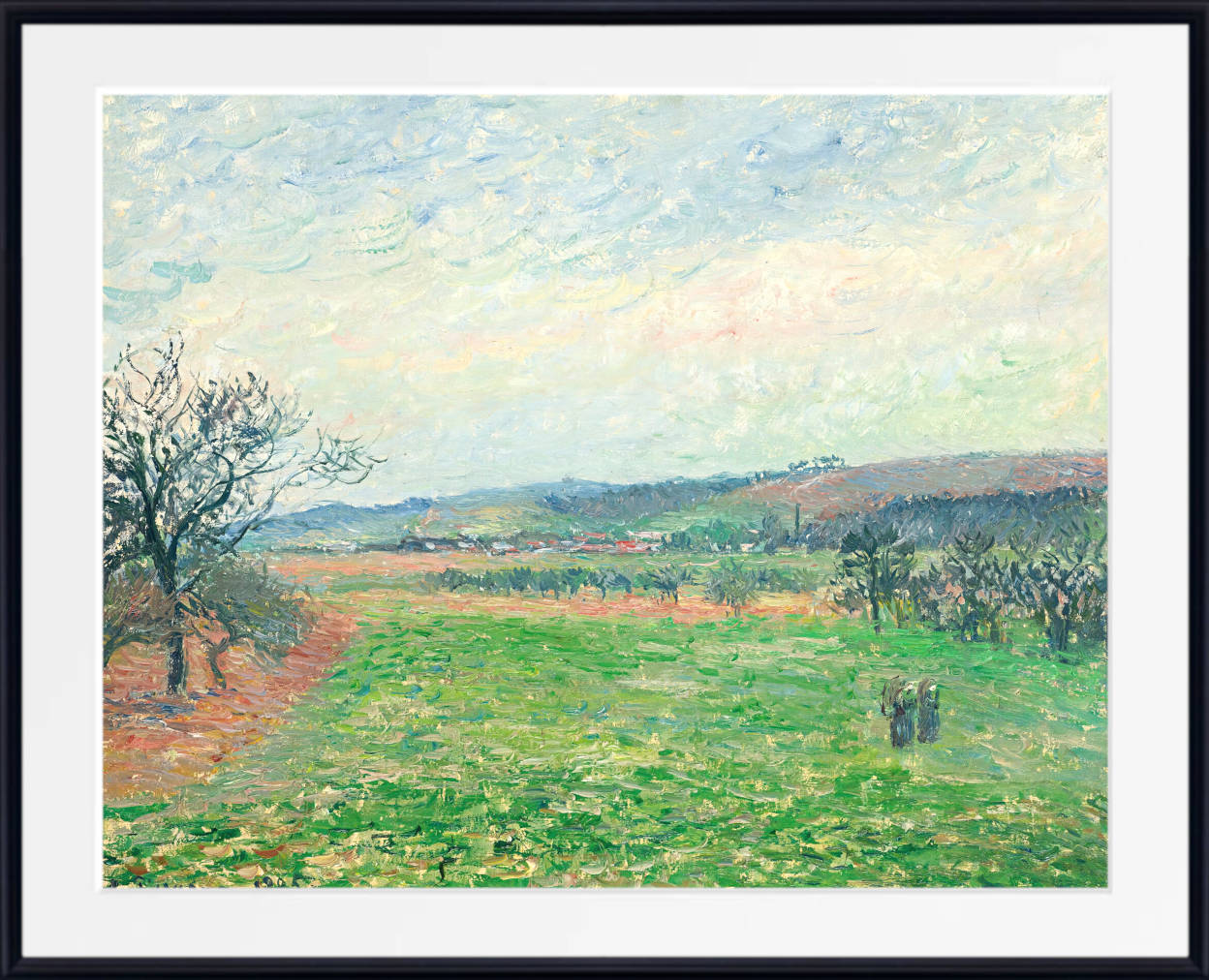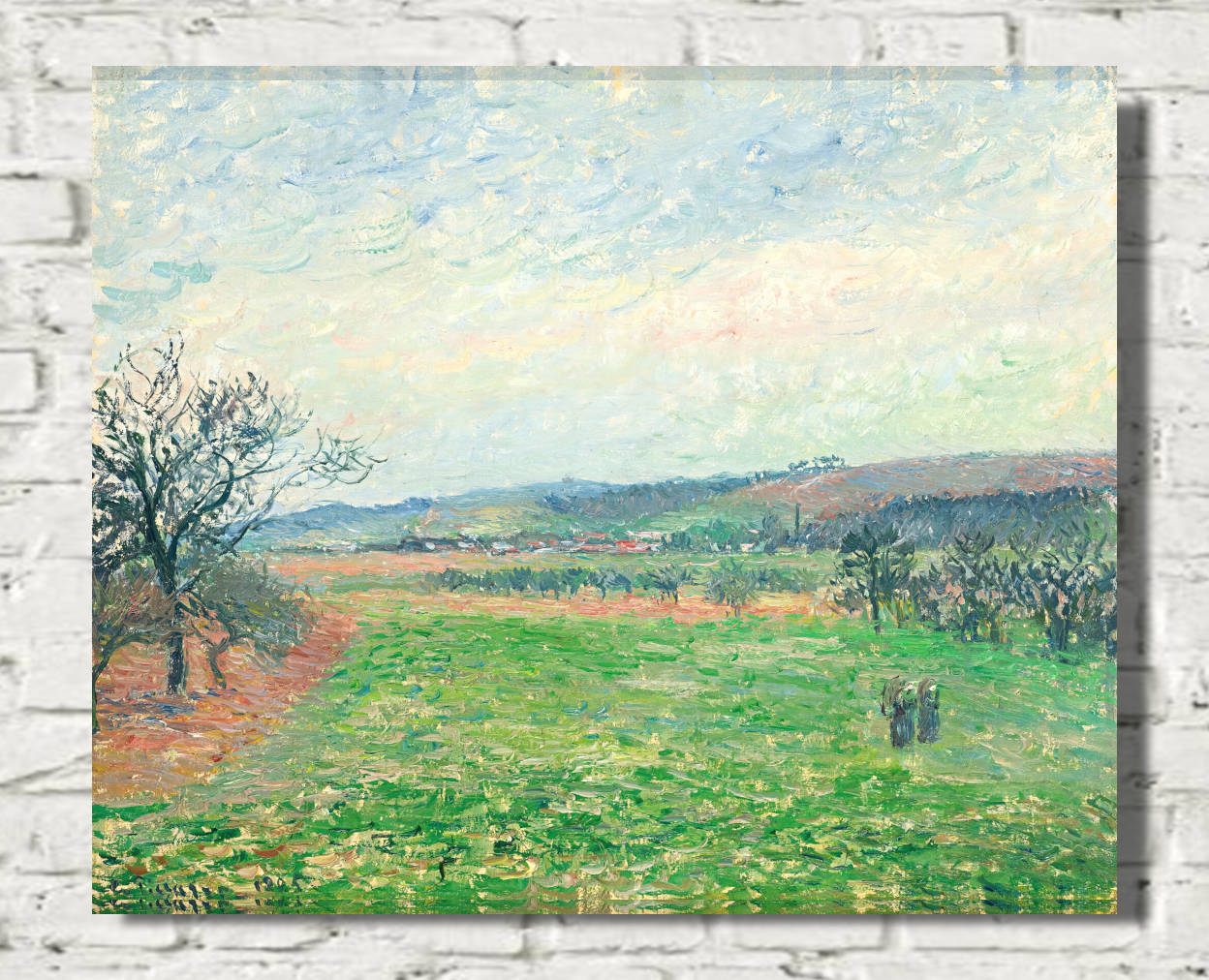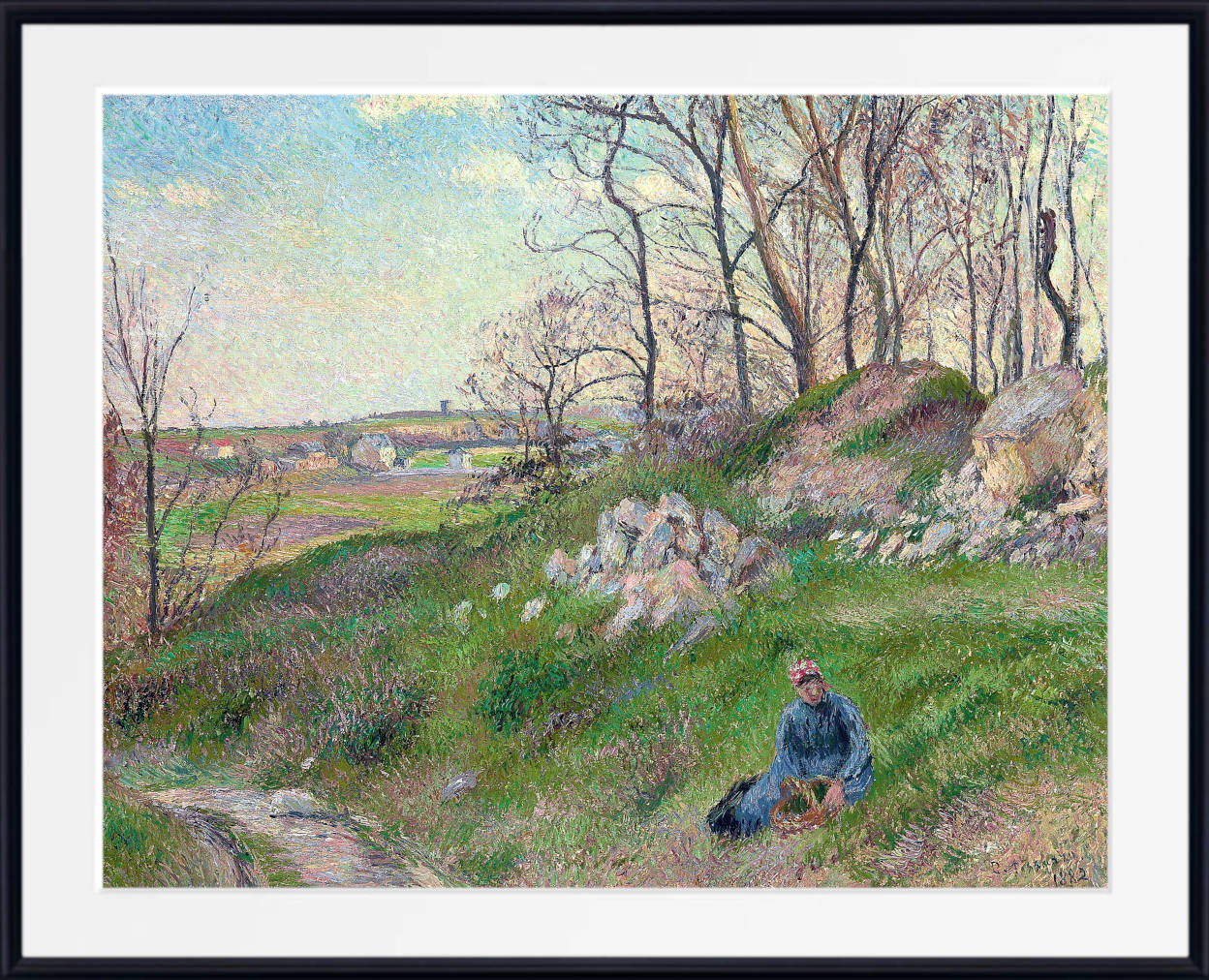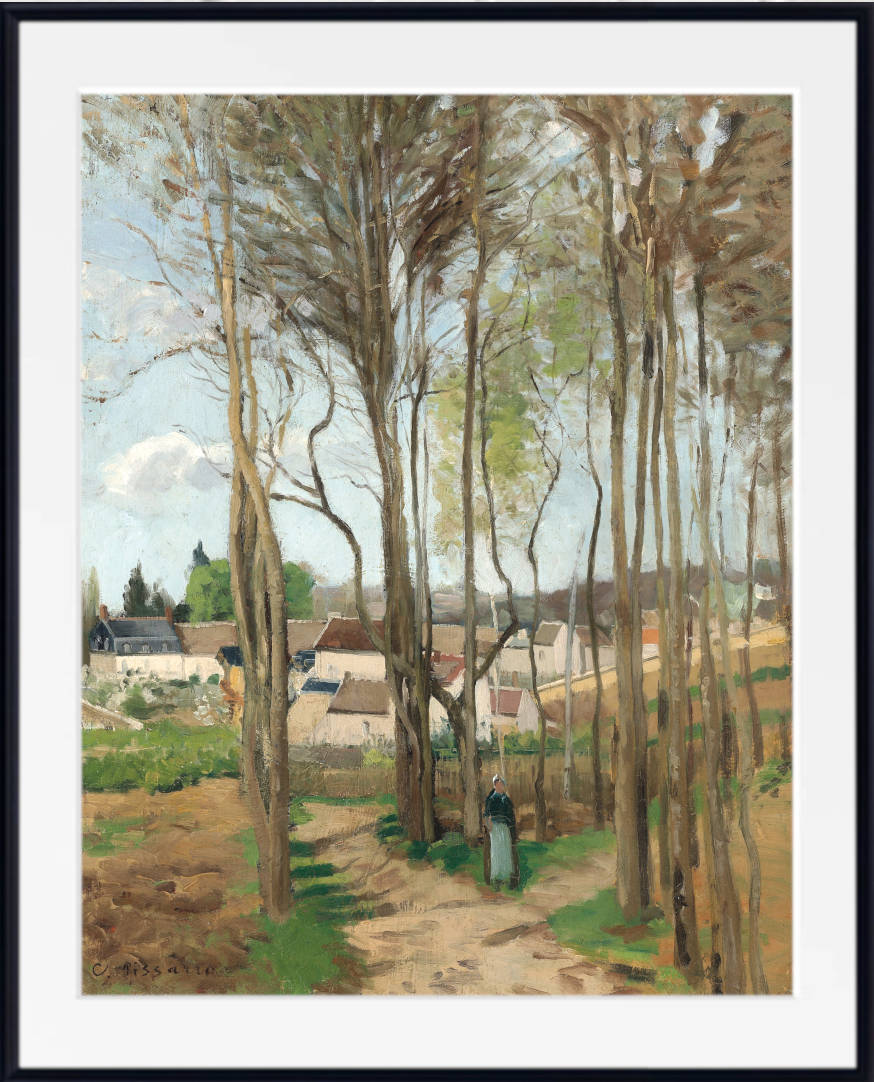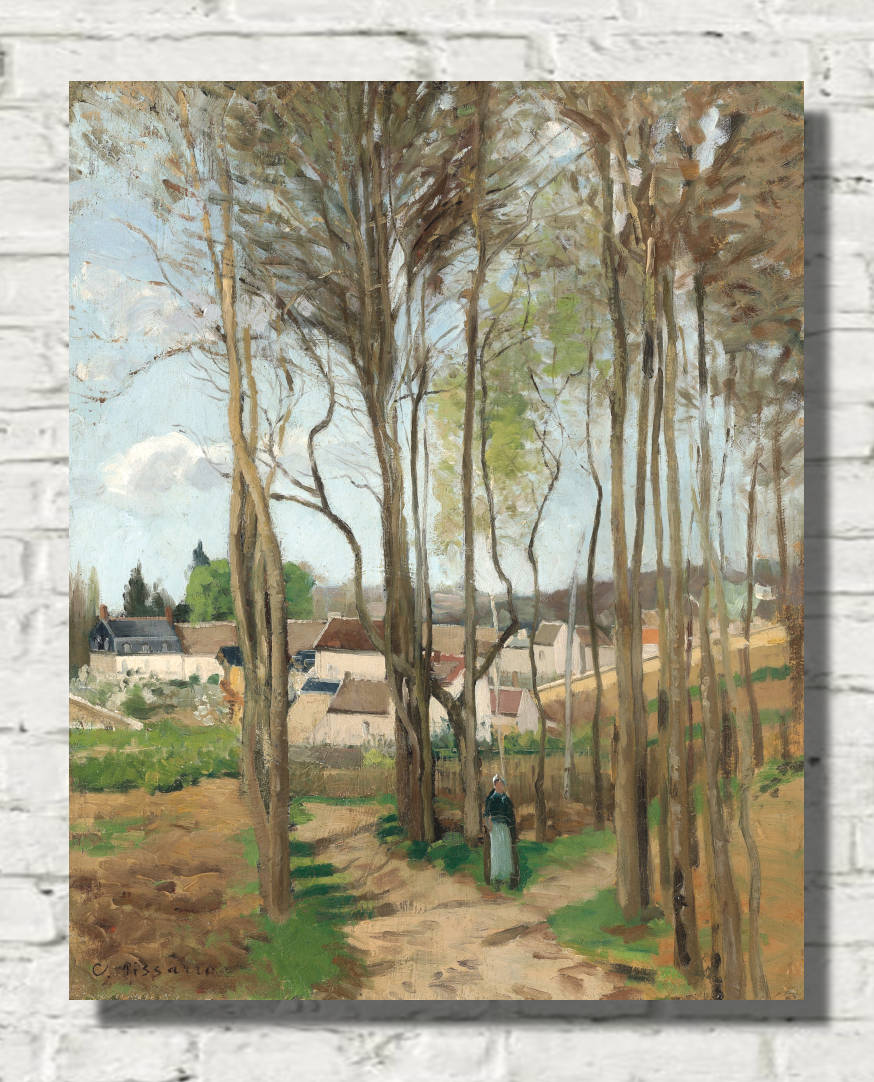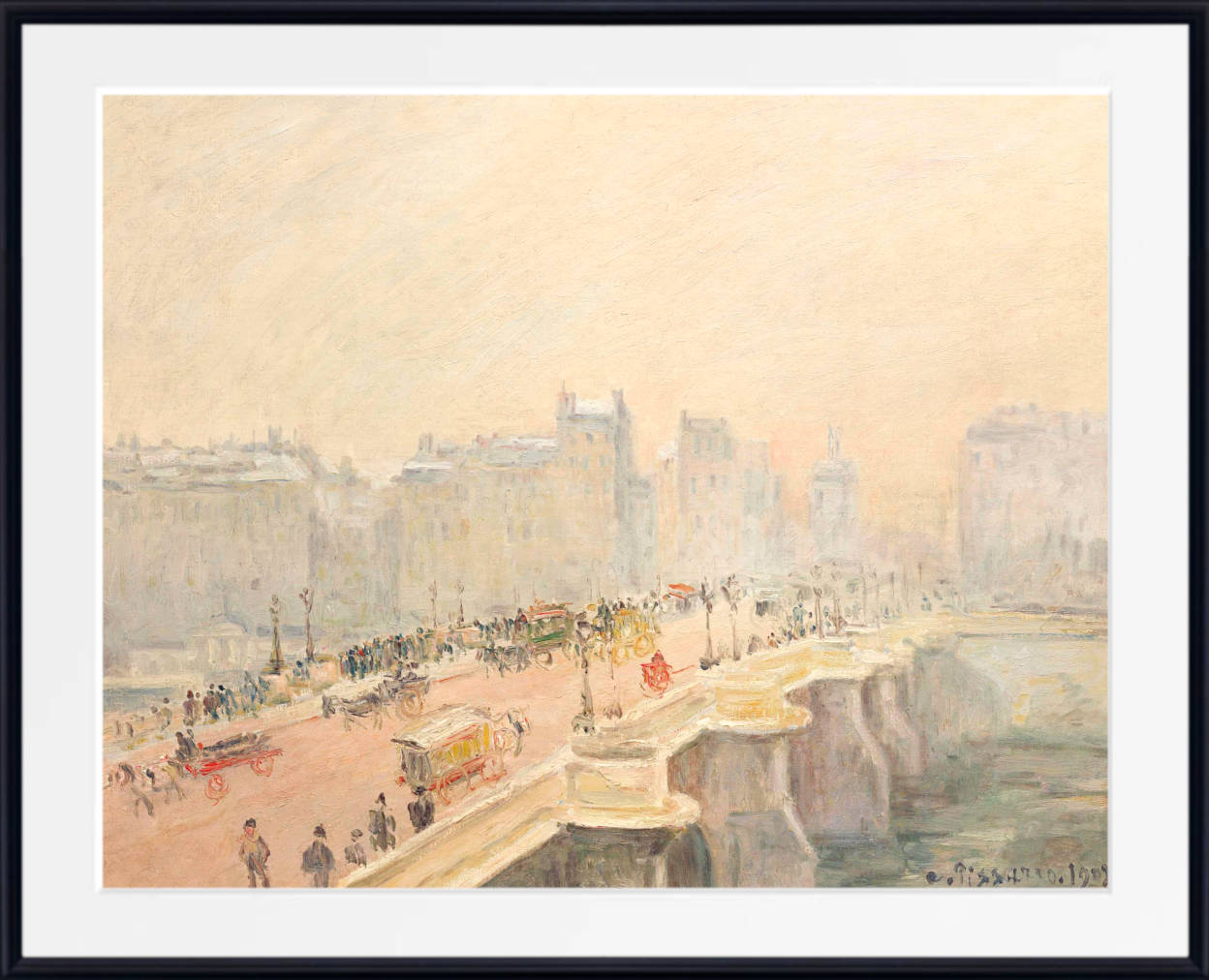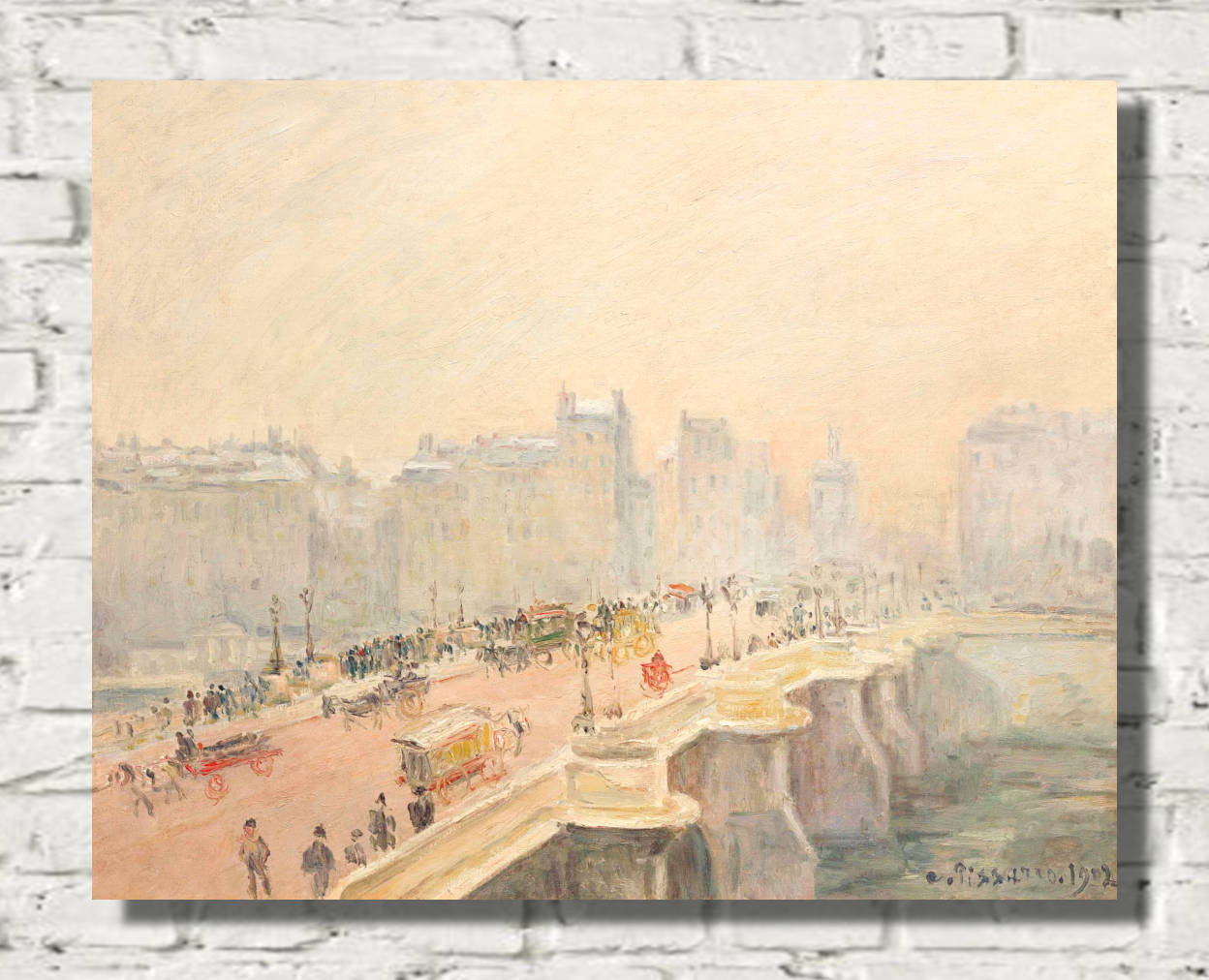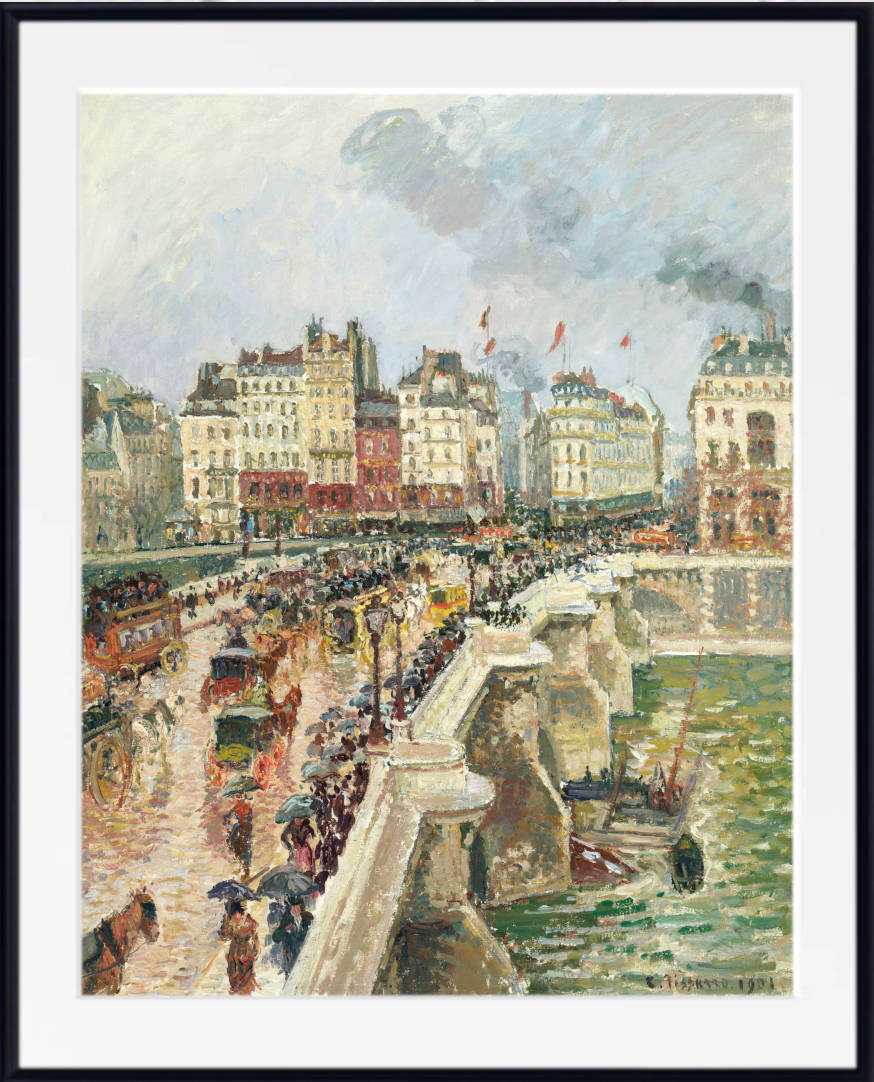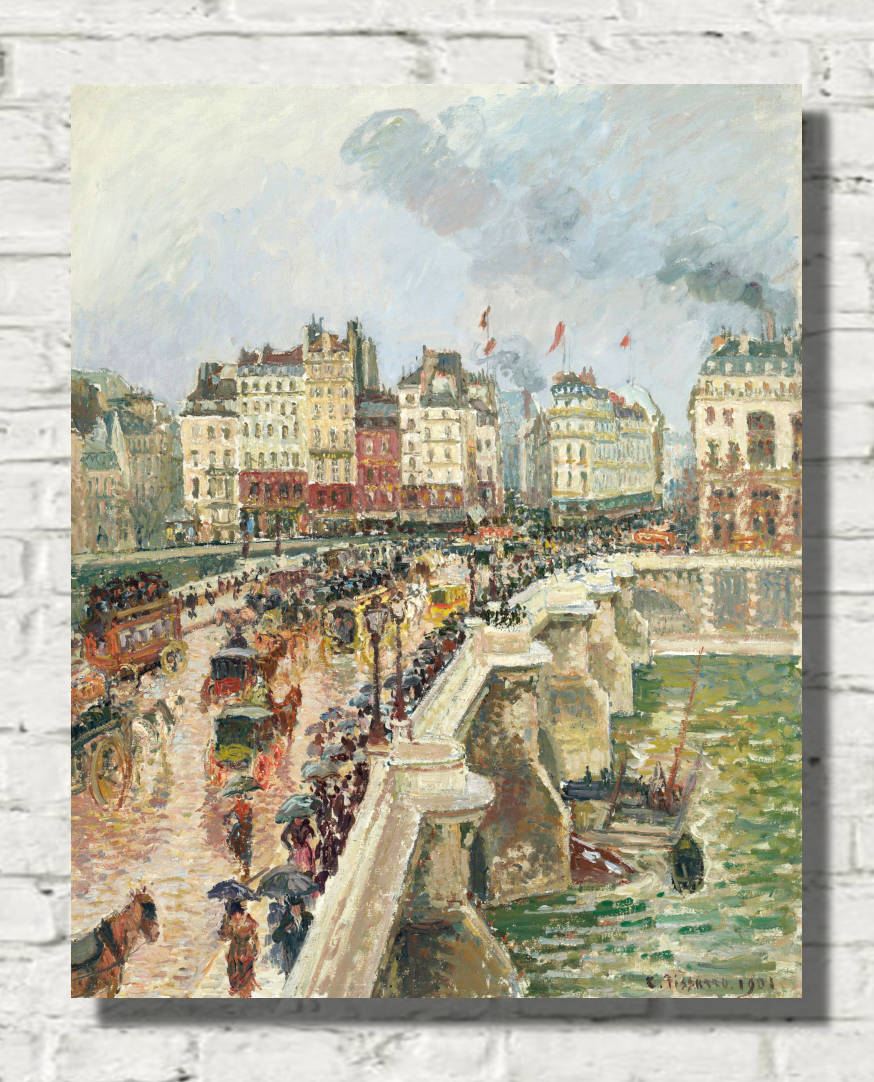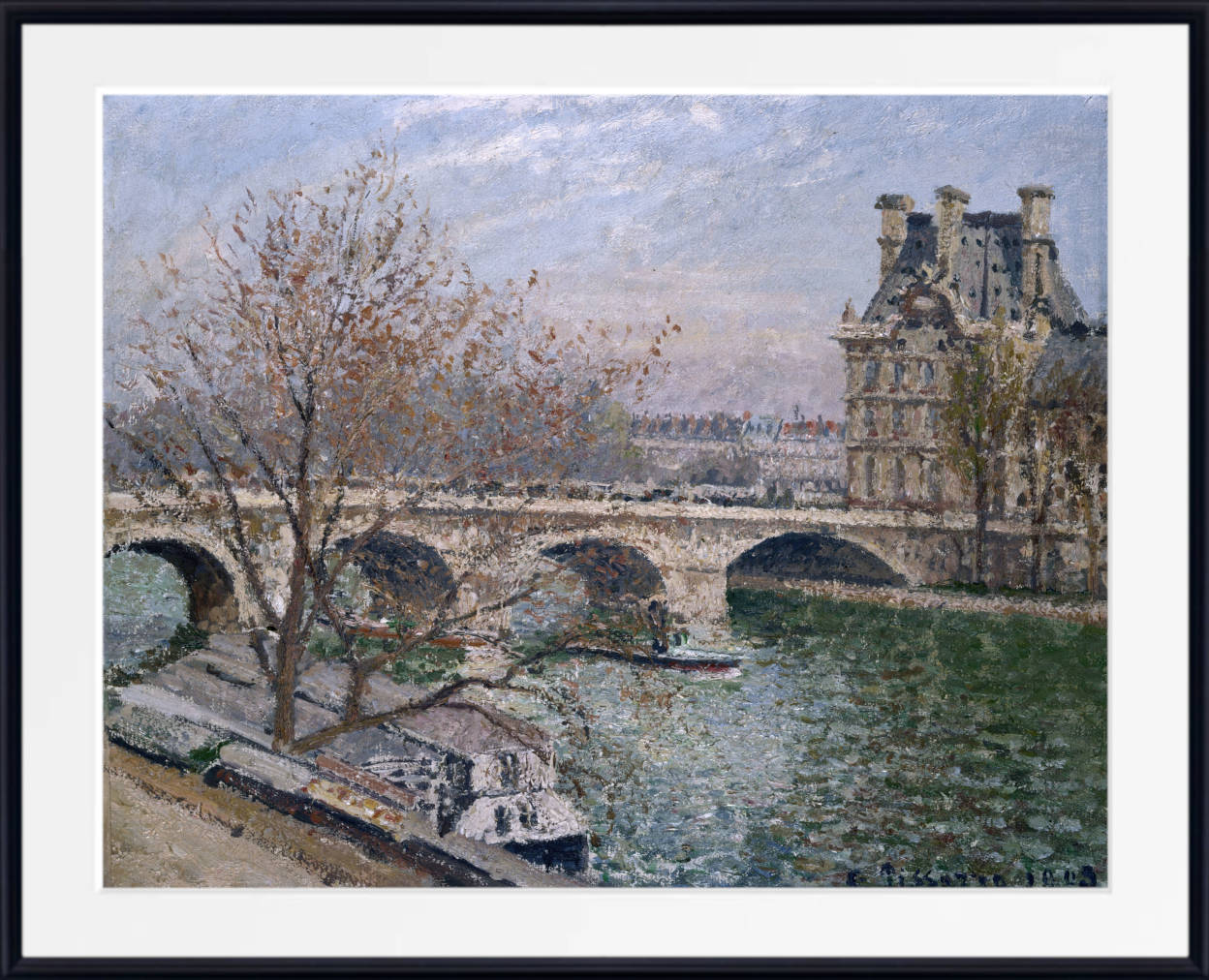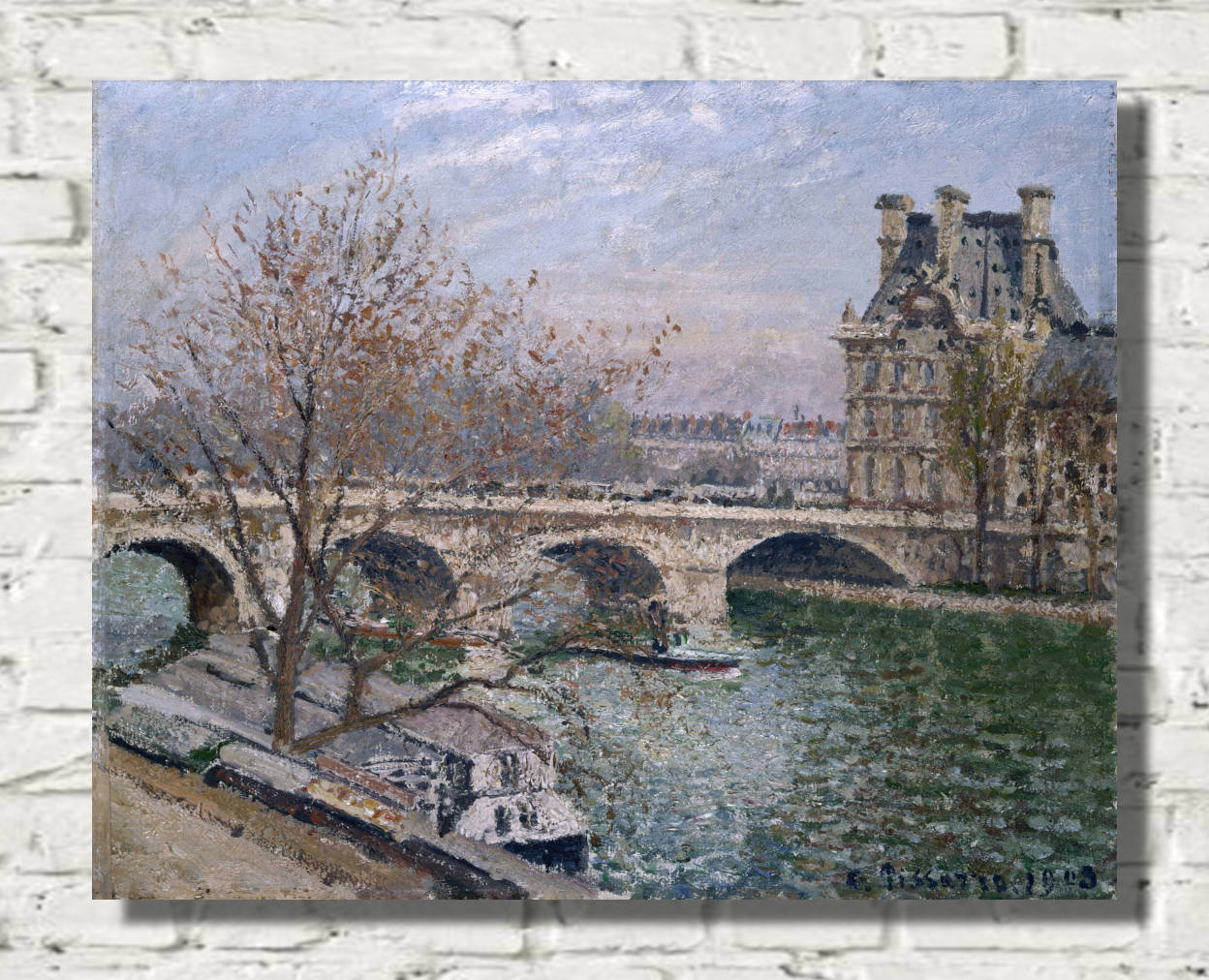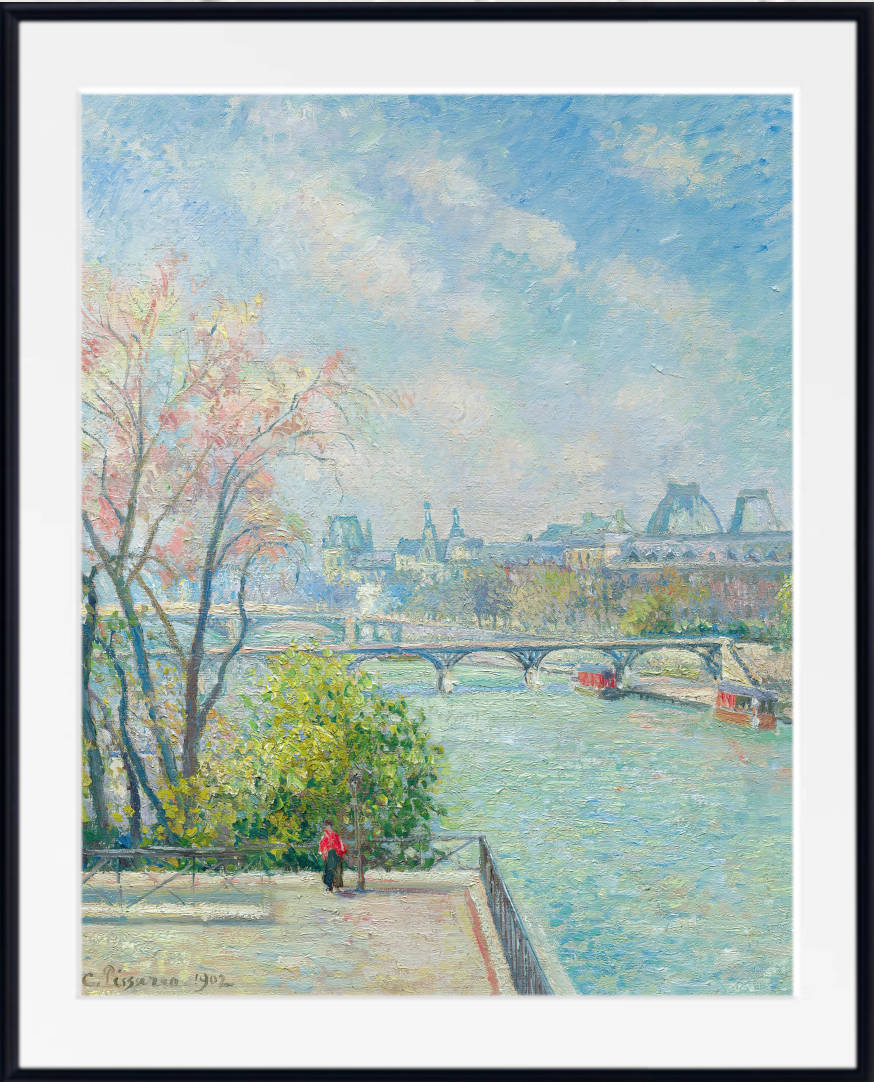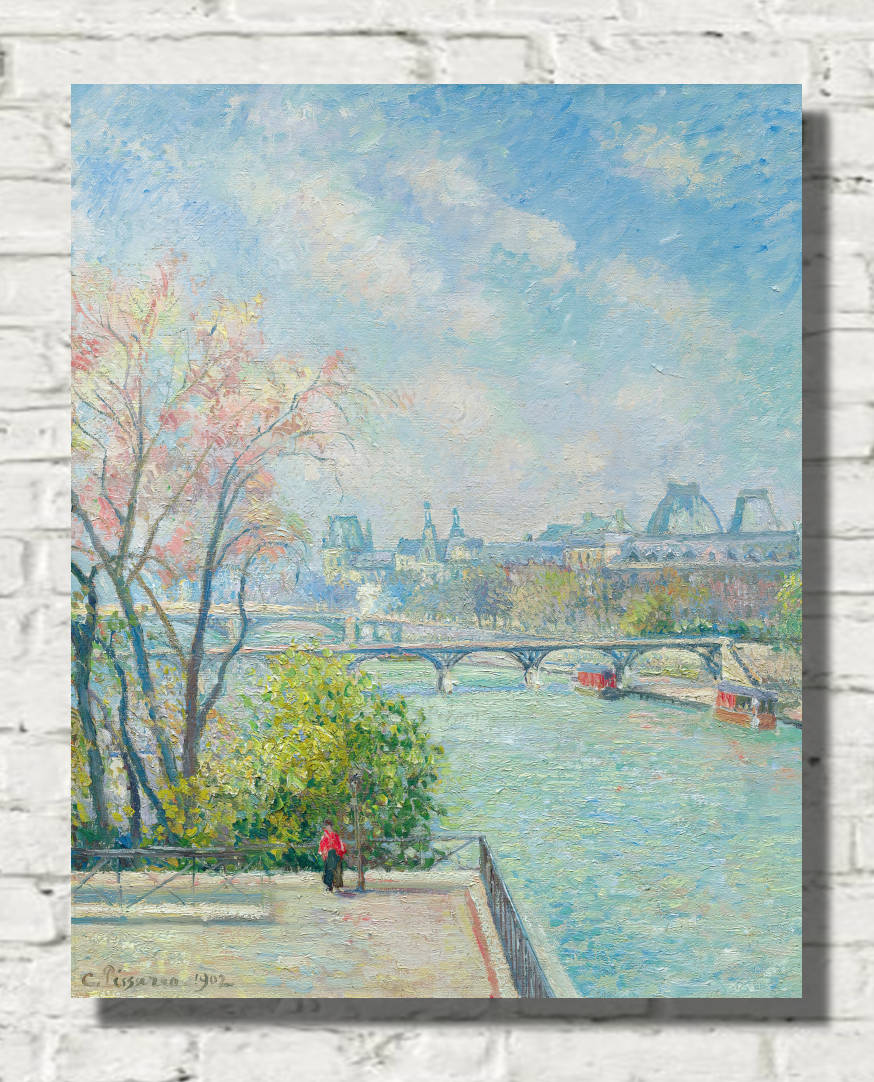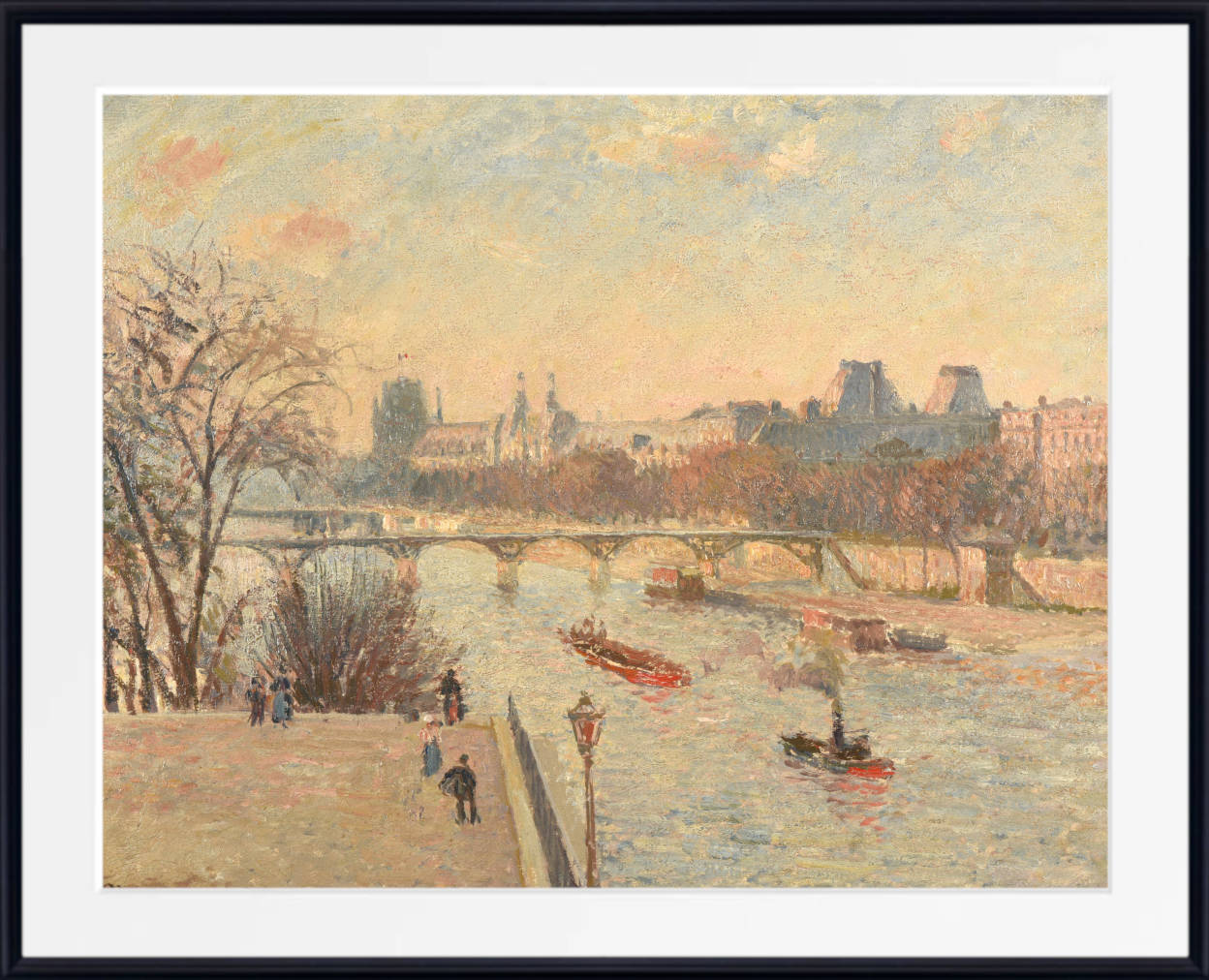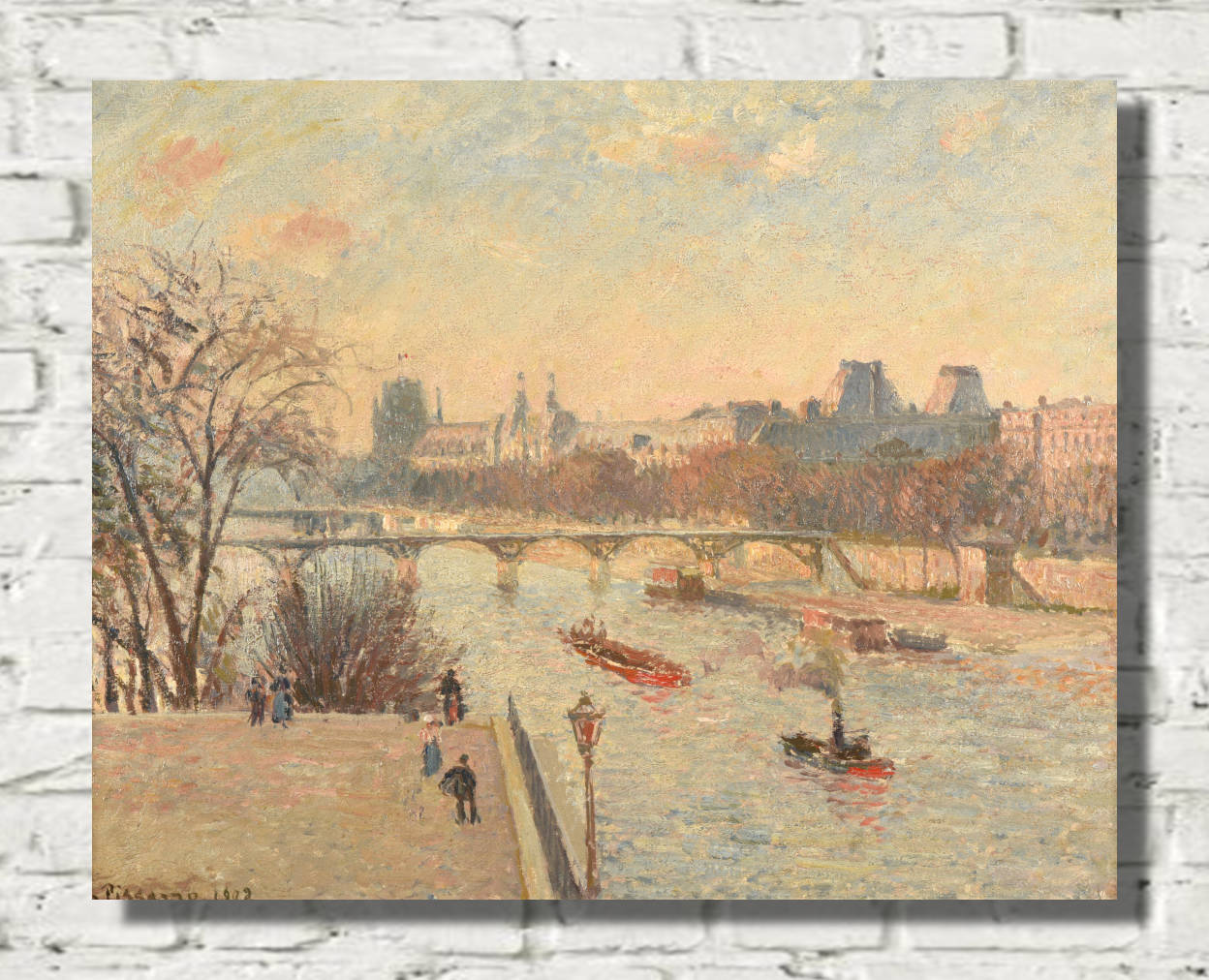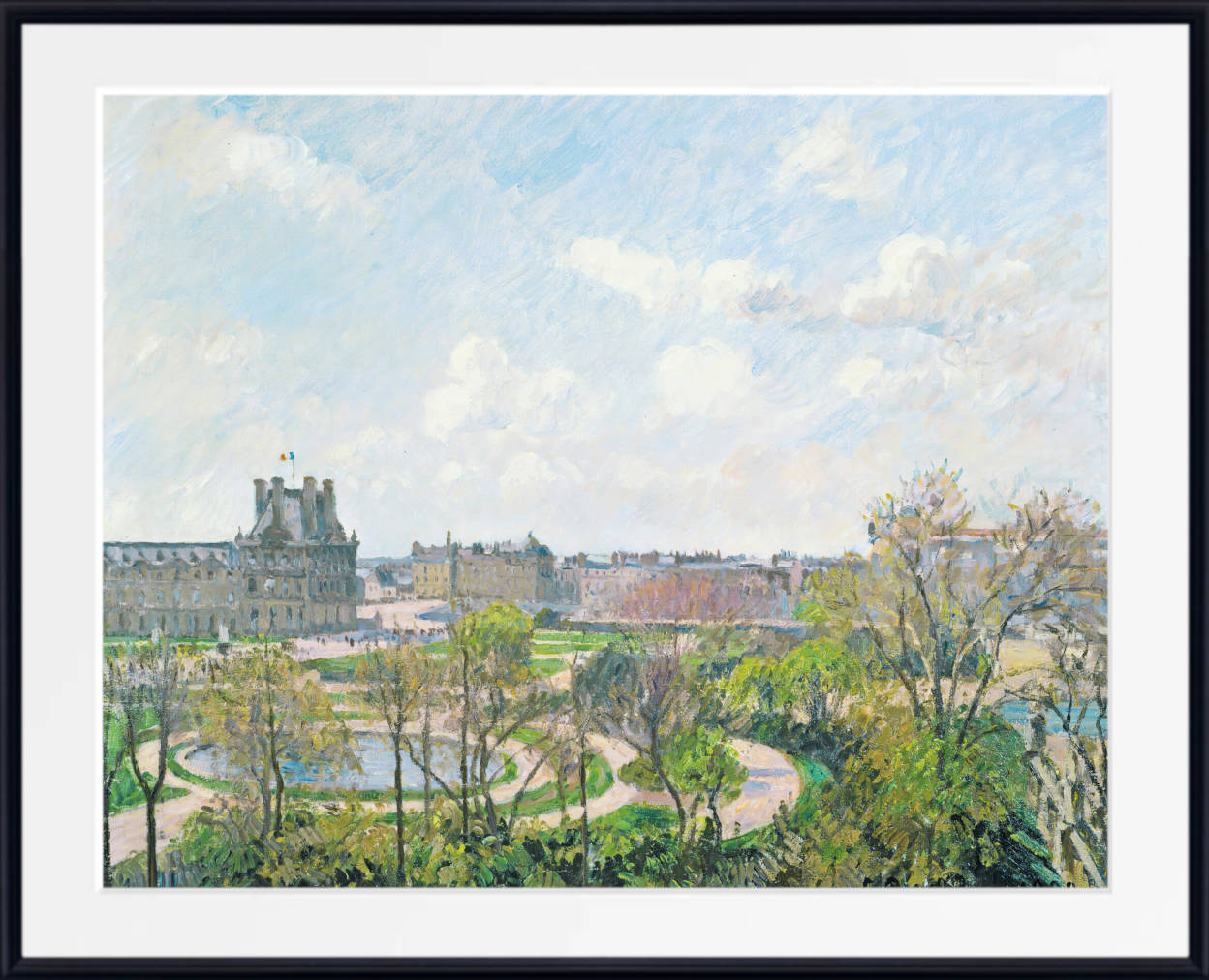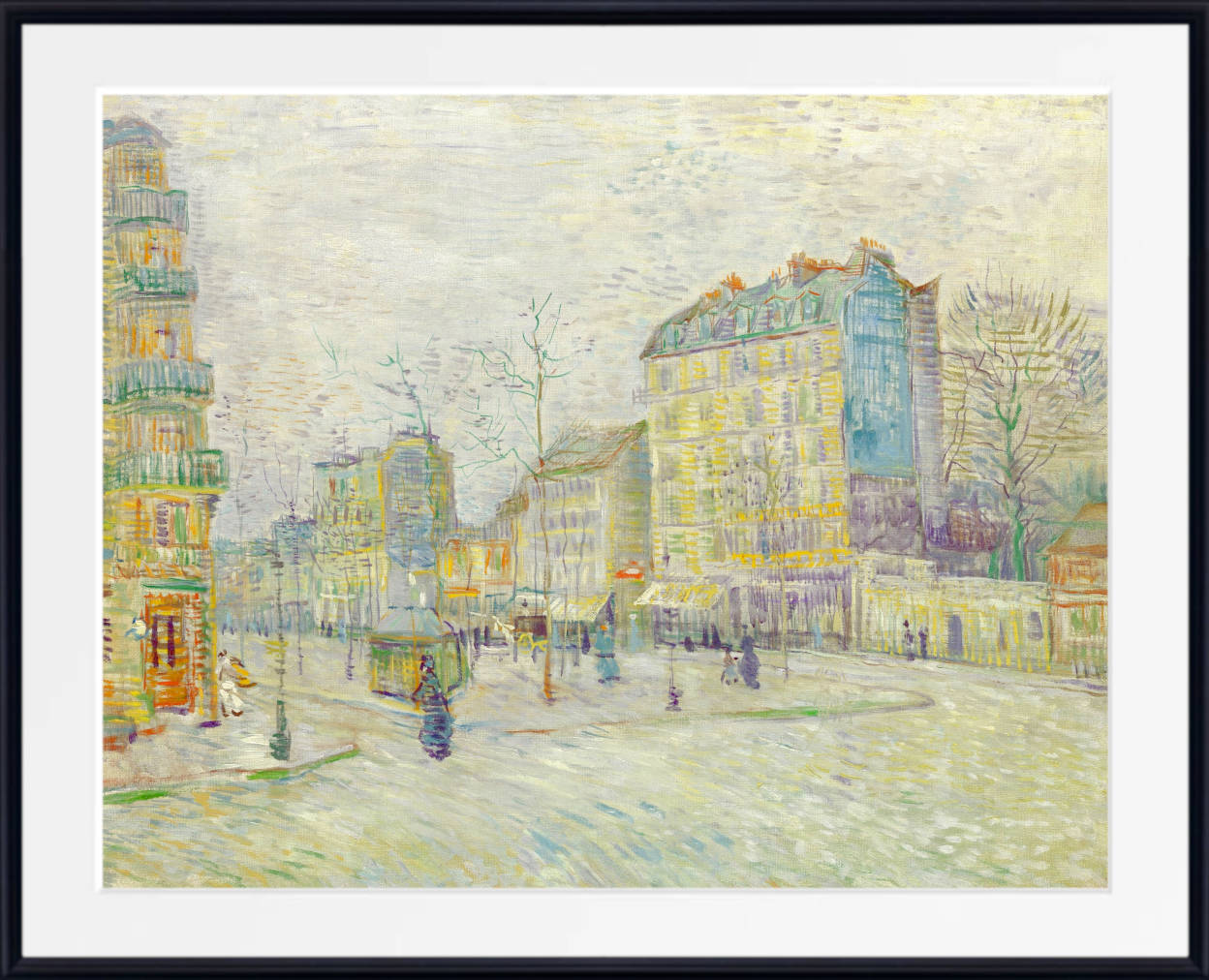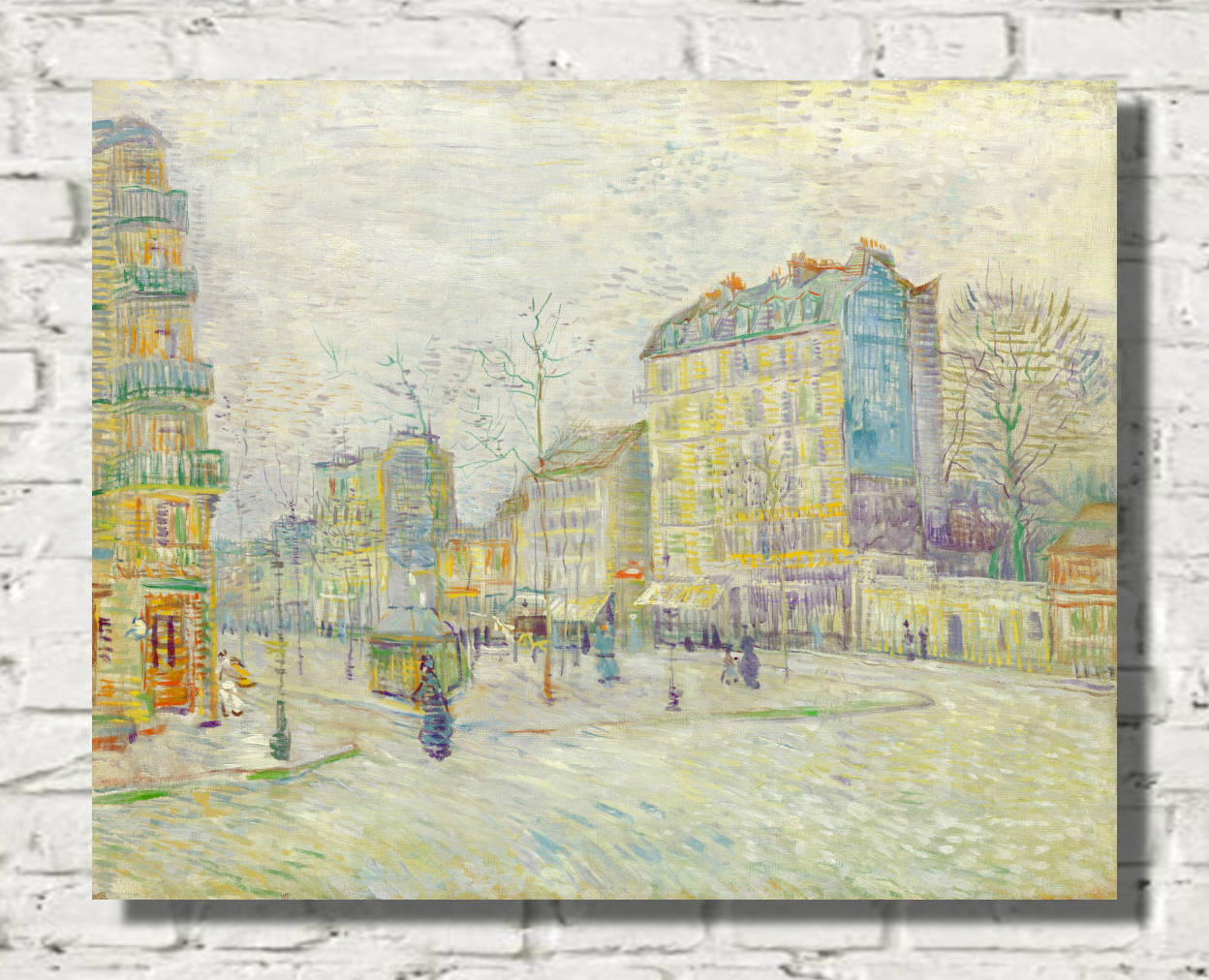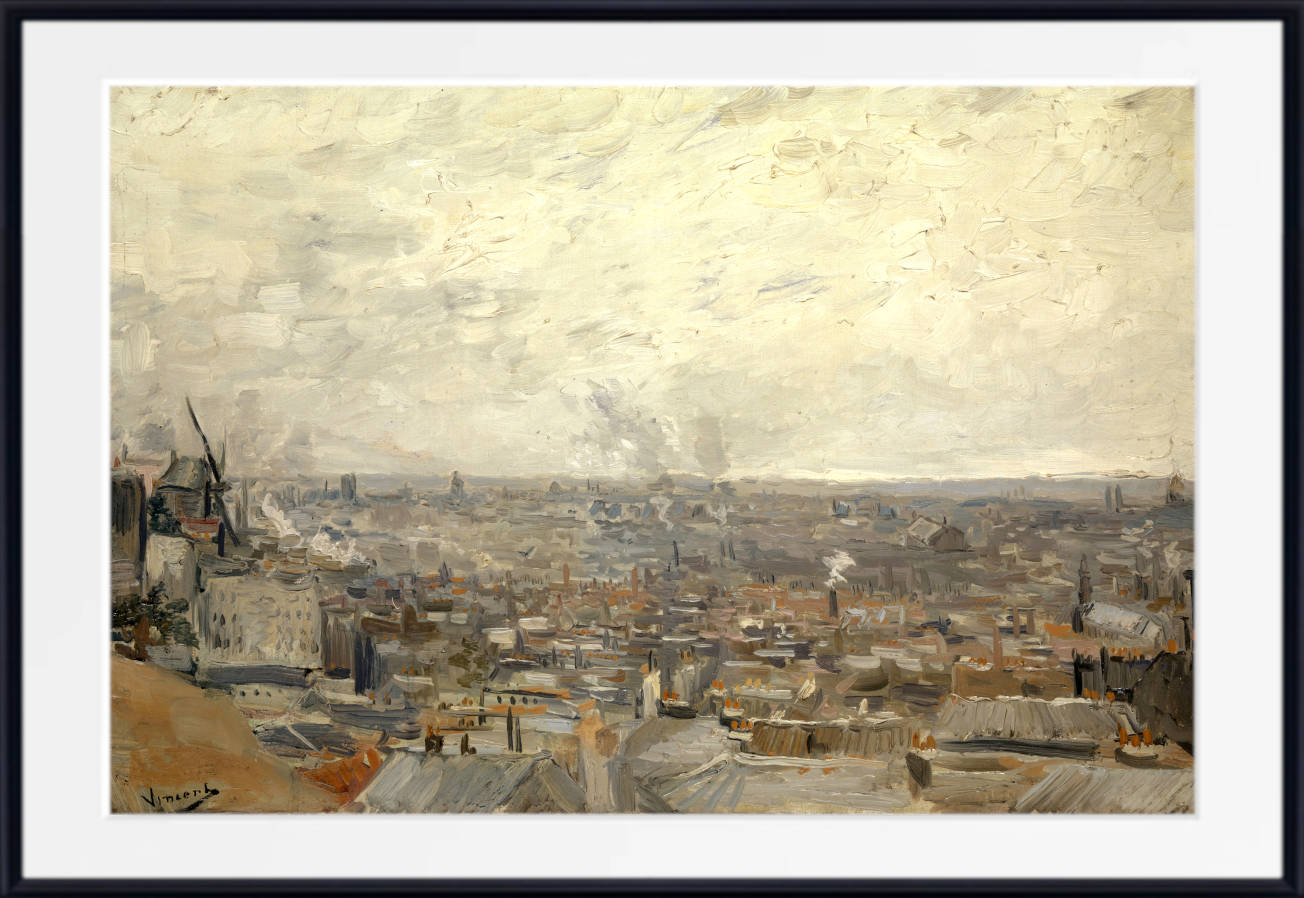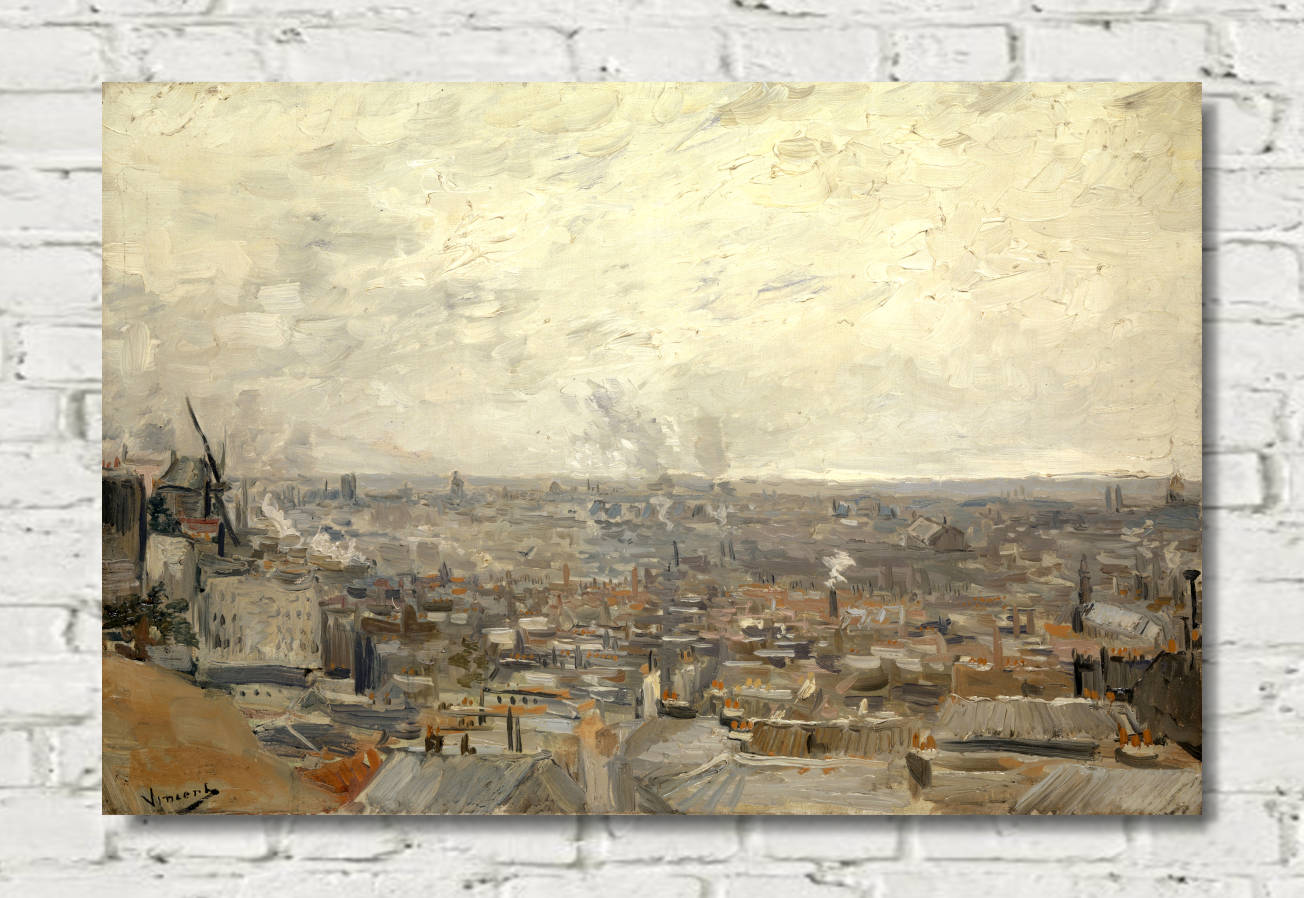The 19th century was a transformative period for Paris, both in its physical landscape and its artistic representation. As the city underwent massive renovations and new monuments were erected, artists found endless inspiration in the evolving cityscape. From the majestic Arc de Triomphe to the Gothic splendor of Notre-Dame Cathedral, Parisian landmarks became central subjects in the works of painters, capturing the essence of a city in flux and cementing these icons in the global imagination.
Eugène Galien-Laloue, Arc de Triomphe
The Changing Face of Paris
The Paris of the 19th century was a city in transition. Baron Haussmann's extensive urban renewal project, commissioned by Napoleon III, reshaped the medieval city into a modern metropolis with wide boulevards, uniform building facades, and grand public spaces. This transformation provided artists with new perspectives and subjects, dramatically influencing the way Paris was portrayed in art.
Haussmann's Paris
The renovation of Paris created sweeping vistas and monumental axes that became favorite subjects for artists. The newly created Avenue de l'Opéra, with its view of the ornate Opéra Garnier, and the radiating avenues from the Arc de Triomphe offered dramatic compositions that captured the grandeur of modern Paris.
Arc de Triomphe: Symbol of Imperial Glory
Commissioned by Napoleon I in 1806 but not completed until 1836, the Arc de Triomphe quickly became a symbol of French military prowess and national identity. Its imposing presence at the center of the Place Charles de Gaulle (formerly Place de l'Étoile) made it a favored subject for artists seeking to capture the monumental spirit of Paris.
L’Arc de Triomphe, Champs-Elysées
Jean Béraud's Parisian Life
Jean Béraud, known for his detailed depictions of Parisian life, often featured the Arc de Triomphe in his paintings. His work "Champs Elysées" (1890) shows the arch as a backdrop to the bustling avenue, highlighting its role as both a landmark and a part of everyday Parisian life.
Impressionist Interpretations
Impressionist painters like Camille Pissarro and Jean-François Raffaëlli also turned their attention to the Arc de Triomphe, capturing it in various lights and weather conditions. Pissarro's series of paintings depicting the Place de l'Étoile showcase the monument through the changing seasons, demonstrating the Impressionist preoccupation with light and atmosphere.
Maximilien Luce, The Quai Saint-Michel and Notre-Dame
Notre-Dame: Gothic Splendor on the Seine
Notre-Dame Cathedral, with its Gothic architecture and prime location on the Île de la Cité, had long been a symbol of Paris. In the 19th century, it experienced a renewed interest, partly due to Victor Hugo's 1831 novel "The Hunchback of Notre-Dame" and the growing appreciation for medieval architecture.
Romantic Visions
Romantic painters like Victor Hugo himself (who was also an accomplished artist) and Johan Barthold Jongkind created moody, atmospheric depictions of Notre-Dame. These works often emphasized the cathedral's Gothic details and its dramatic silhouette against the Parisian sky.
Impressionist Light
Claude Monet's series of paintings of Notre-Dame, created in 1894, are among the most famous depictions of the cathedral. Monet painted the facade at different times of day, capturing the changing play of light on its stone surfaces and demonstrating the Impressionist fascination with temporal effects.
The Eiffel Tower: A New Icon Rises
Constructed for the 1889 World's Fair, the Eiffel Tower quickly became the defining landmark of Paris. Its controversial design and unprecedented height made it a subject of fascination for artists in the latter part of the 19th century.
Georges Seurat's Pointillism
Georges Seurat's "The Eiffel Tower" (1889) is one of the earliest and most striking artistic representations of the monument. Using his pointillist technique, Seurat created a shimmering, almost ethereal vision of the tower, capturing both its physical presence and its revolutionary impact on the Parisian skyline.
Henri Rousseau, The Eiffel Tower
Henri Rousseau's Naive Style
Henri Rousseau's "Eiffel Tower" (1898) offers a unique, dreamlike interpretation of the landmark. Rousseau's naive style lends a whimsical quality to the tower, creating a fantastical vision of Paris.
The Seine and Its Bridges: Arteries of the City
The Seine River, with its many bridges, became a favorite subject for 19th-century artists. The river not only provided beautiful vistas but also reflected the life and energy of the city.
Pont Neuf: The City's Oldest Bridge
The Pont Neuf, despite its name meaning "New Bridge," is the oldest standing bridge in Paris. Artists like Johan Barthold Jongkind and Charles Meryon created memorable depictions of this historic landmark, often emphasizing its architectural details and its role in Parisian life.
Auguste Renoir's Boat Parties
Auguste Renoir's "Luncheon of the Boating Party" (1880-1881), set on the balcony of the Maison Fournaise on the Seine, captures the joie de vivre of Parisian leisure life. While not depicting a specific landmark, it showcases the importance of the Seine in 19th-century Parisian culture.
Montmartre: The Artist's Haven
As the 19th century progressed, the hilltop neighborhood of Montmartre became an important center for artistic life in Paris. Its rural character, combined with its elevated views of the city, made it a popular subject and vantage point for artists.
Vincent van Gogh's Windmills
Though Dutch by birth, Vincent van Gogh spent significant time in Paris. His paintings of the windmills of Montmartre, such as "Le Moulin de la Galette" (1886), capture the unique character of this artistic enclave.
The Sacré-Cœur Basilica
Construction of the Sacré-Cœur Basilica began in 1875, providing artists with a new landmark to depict. Painters like Maximilien Luce captured the basilica in various stages of construction, documenting its gradual domination of the Montmartre skyline.
Conclusion: A City Immortalized
The iconic landmarks of 19th-century Paris, as depicted by the artists of the time, have played a crucial role in shaping our perception of the city. From the grand monuments of imperial power to the medieval splendor of Notre-Dame, from the revolutionary height of the Eiffel Tower to the timeless flow of the Seine, these artistic representations have immortalized Paris at a pivotal moment in its history.
The diverse styles and techniques employed by artists – from the precision of academic painters to the atmospheric effects of the Impressionists, from the pointillism of Seurat to the naive visions of Rousseau – offer a rich tapestry of perspectives on these landmarks. Through their works, we not only see the physical evolution of Paris but also sense the changing attitudes and artistic philosophies of the time.
These 19th-century depictions of Parisian landmarks continue to resonate today, influencing how we see and understand the city. They serve as both historical documents and timeless works of art, inviting us to view Paris through the eyes of those who witnessed its transformation into the iconic cityscape we know today.
Related Articles
Scenes of Paris
Eugène Galien-Laloue

